EXTREMELY RARE! WWII 1945 "SECRET" Variable Time (Proximity) Fuze T132 Model “Ordinance Department U.S.A.” Anti-Aircraft & Artillery Blueprint
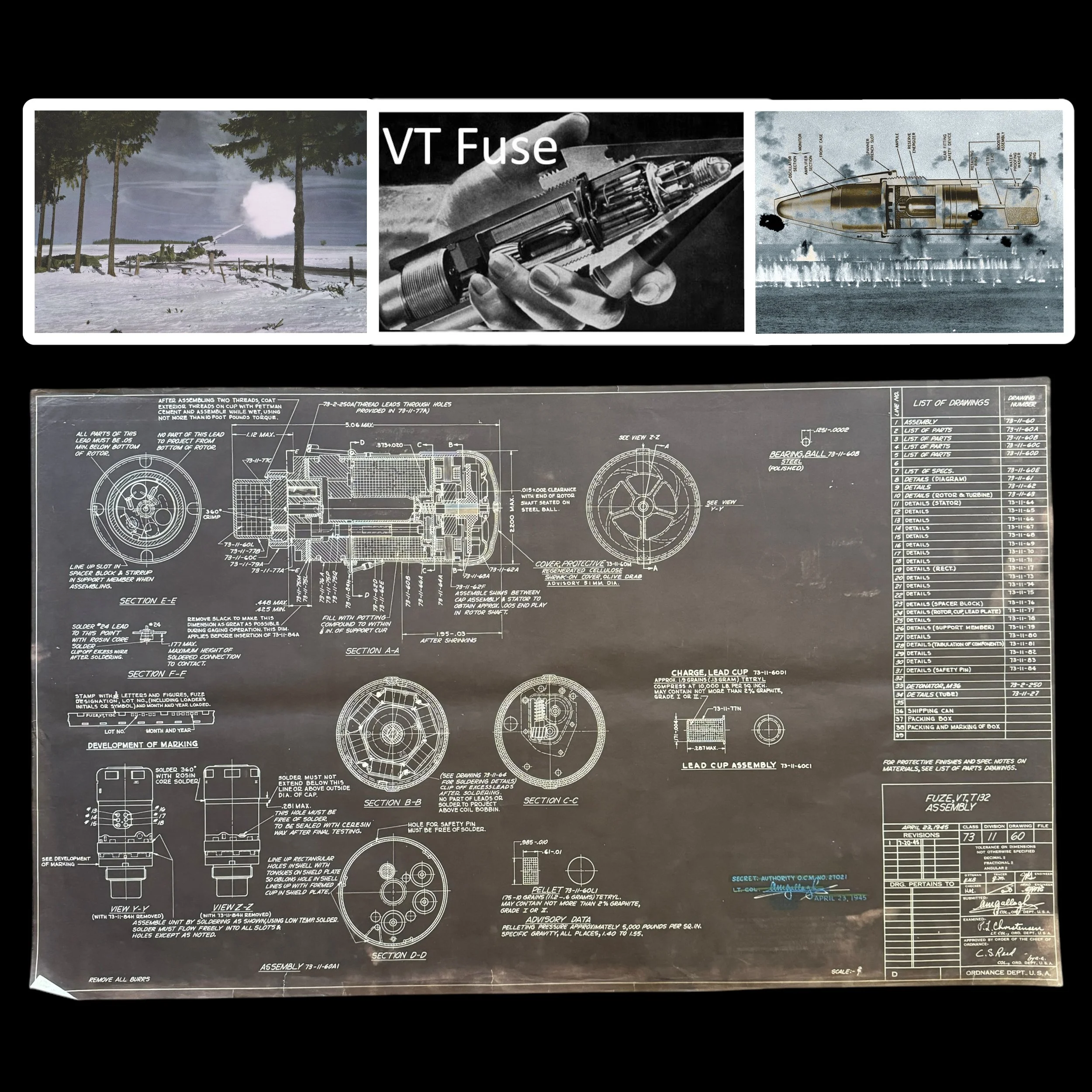

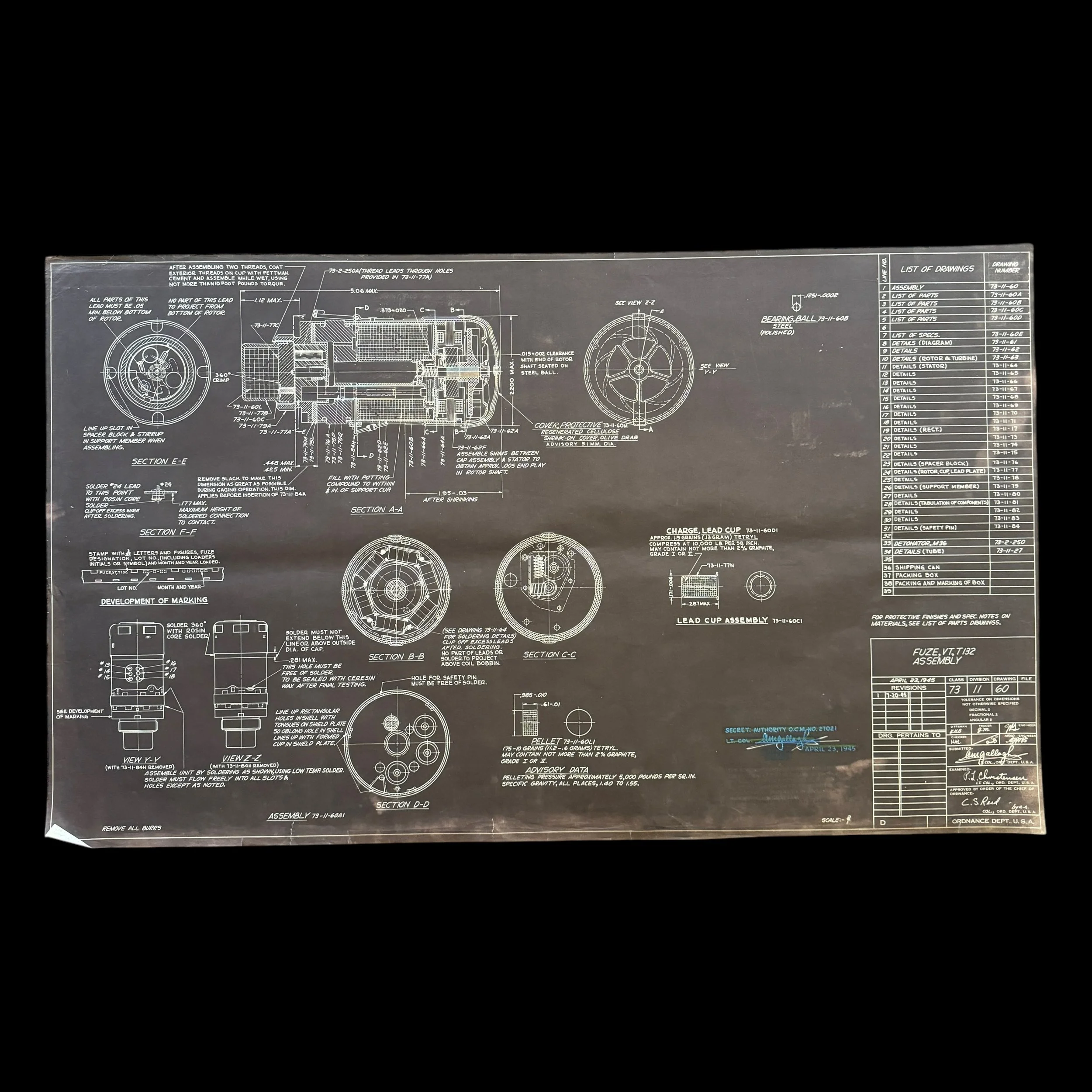
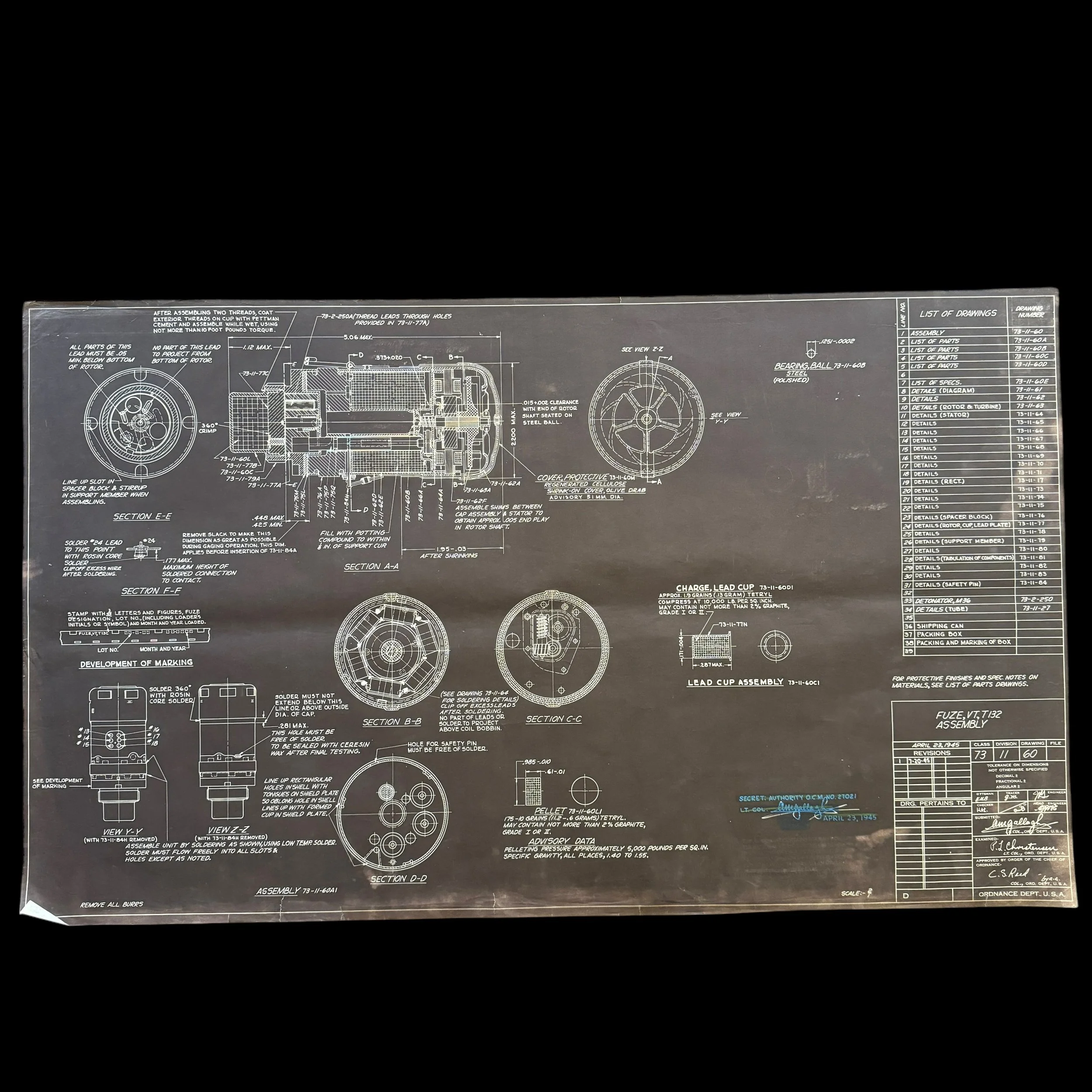
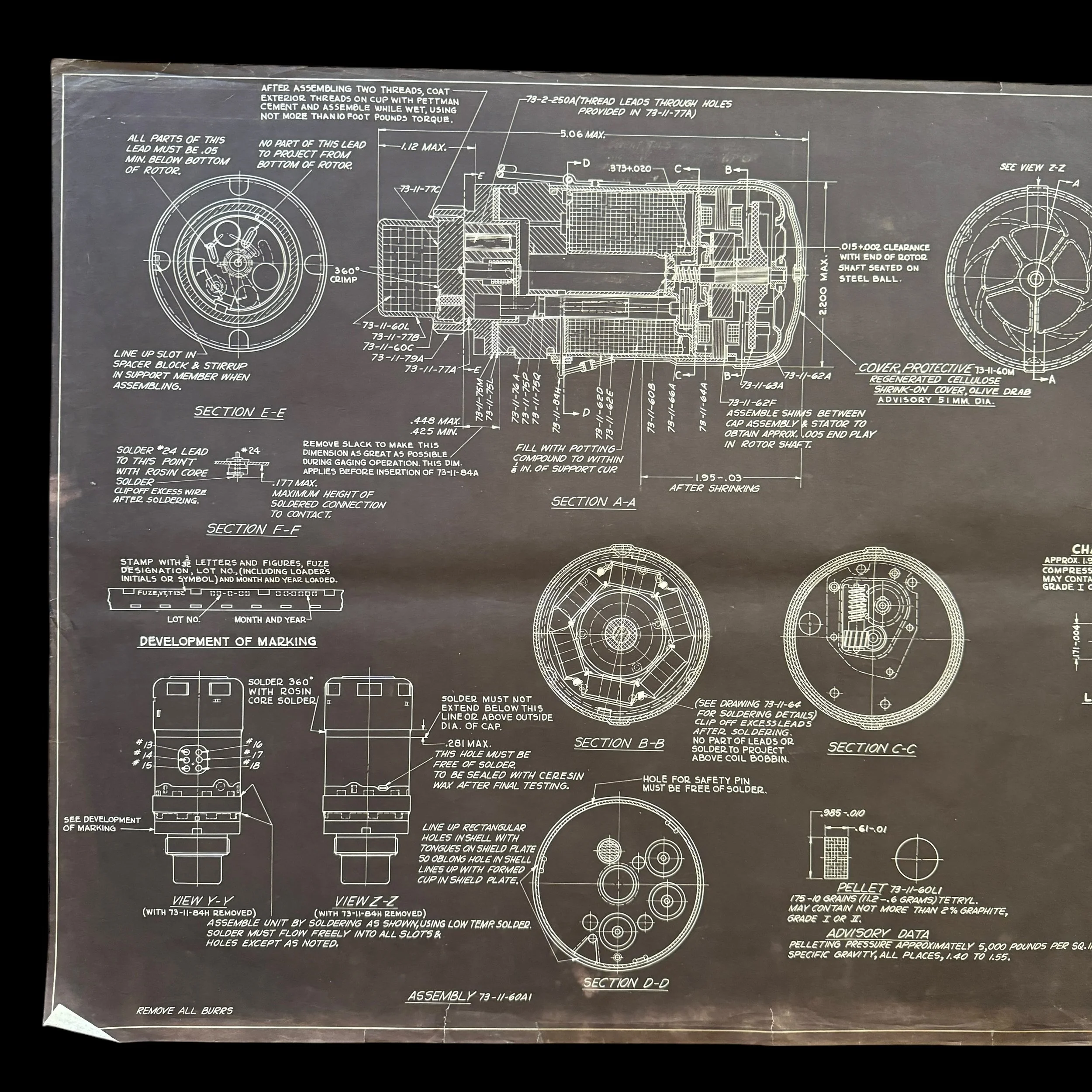
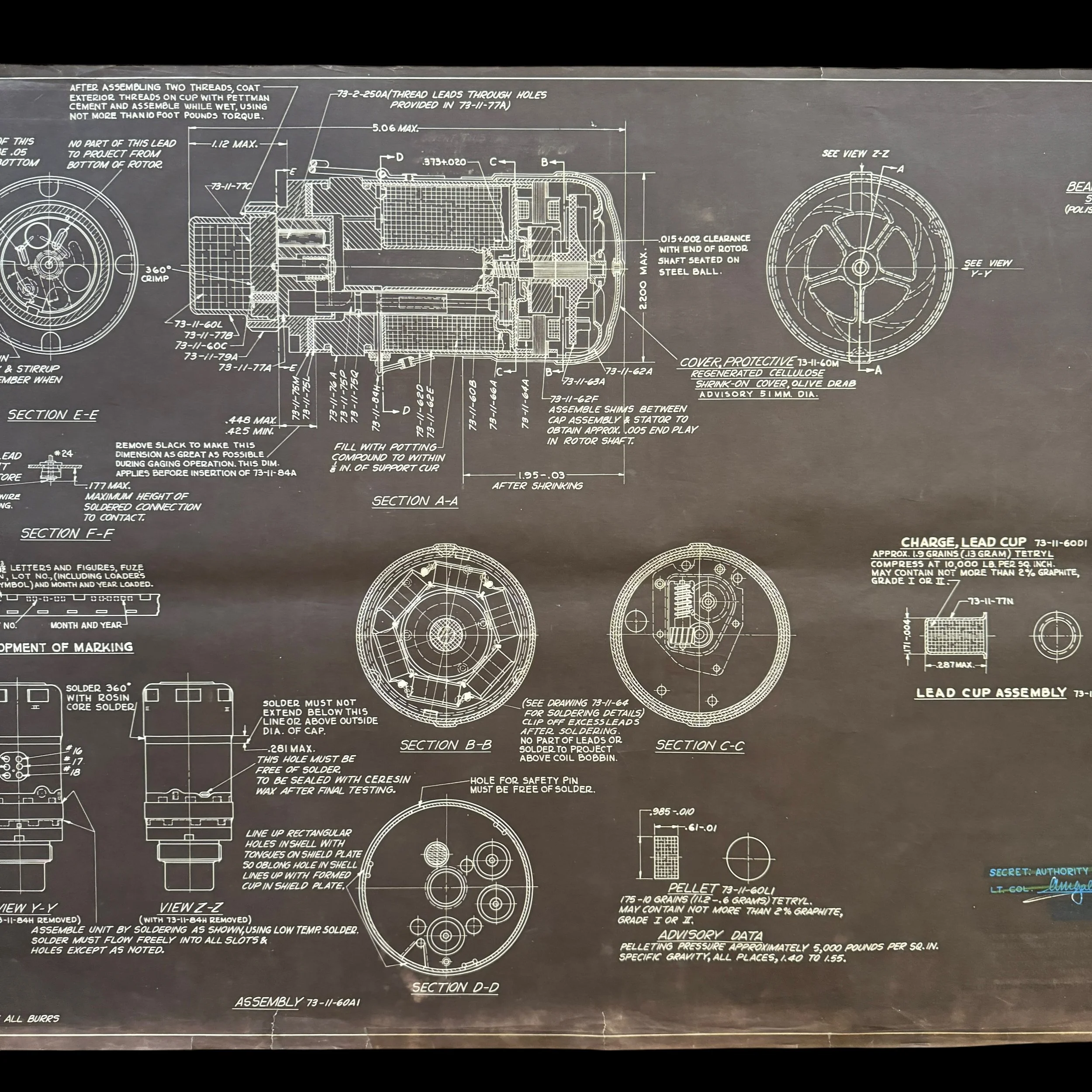
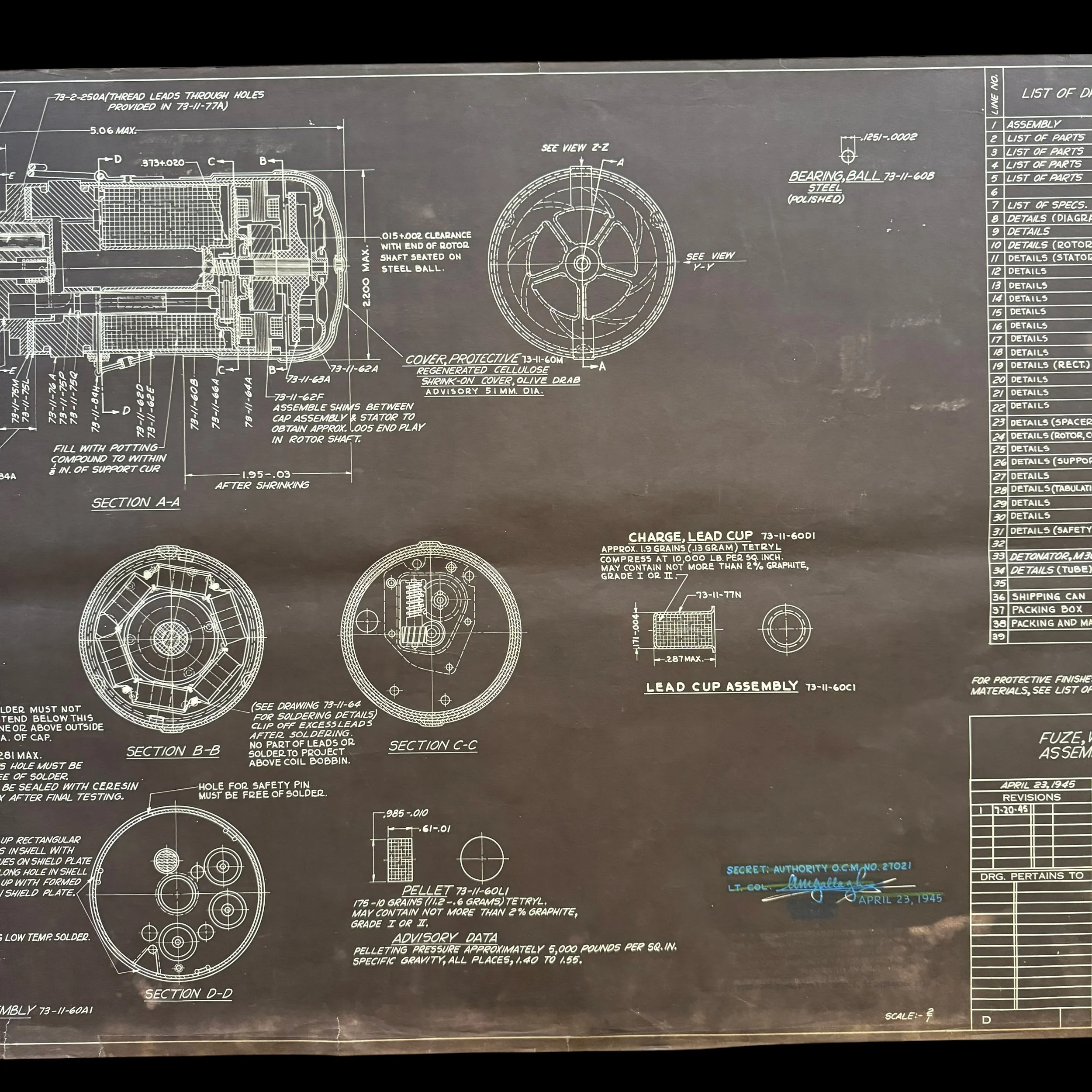
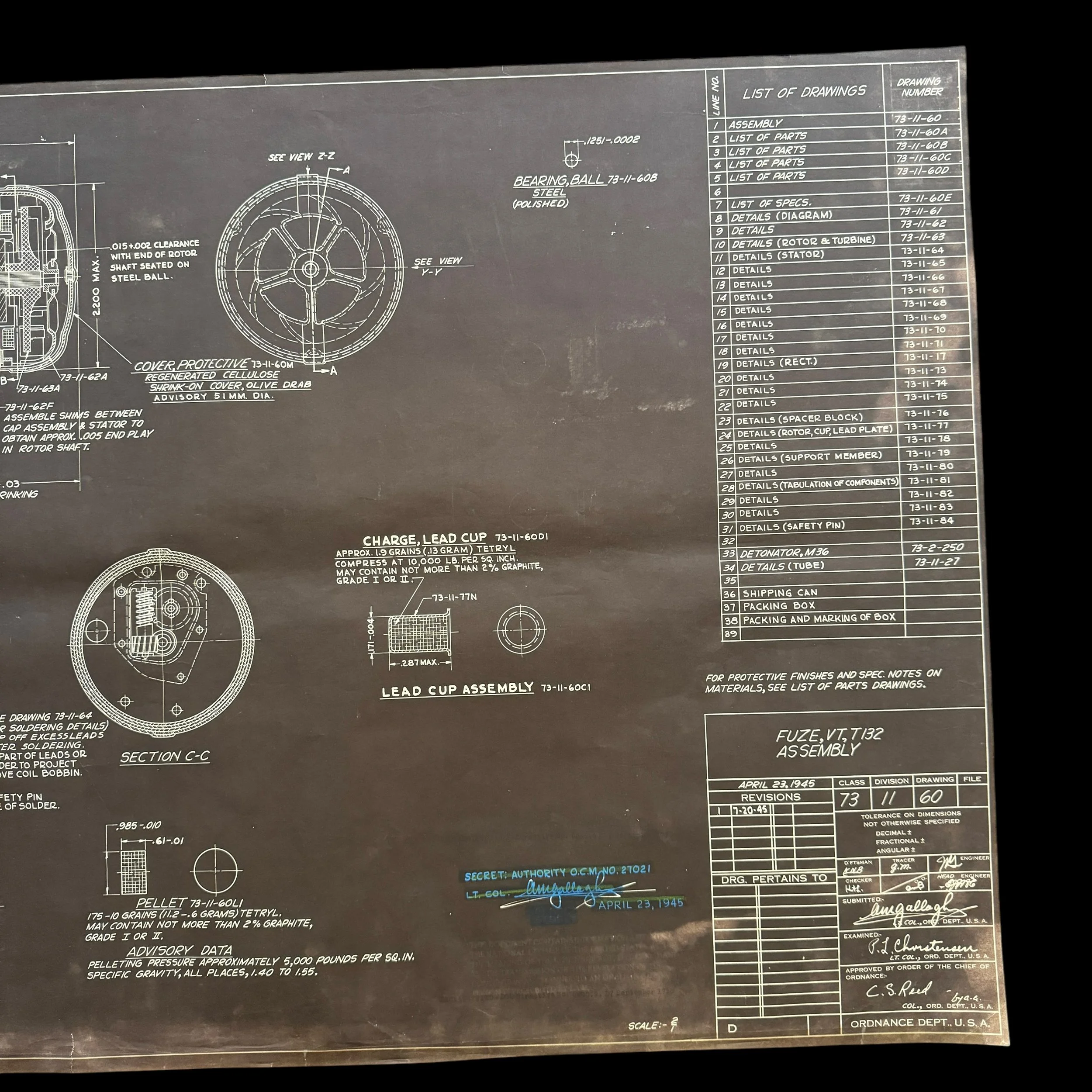
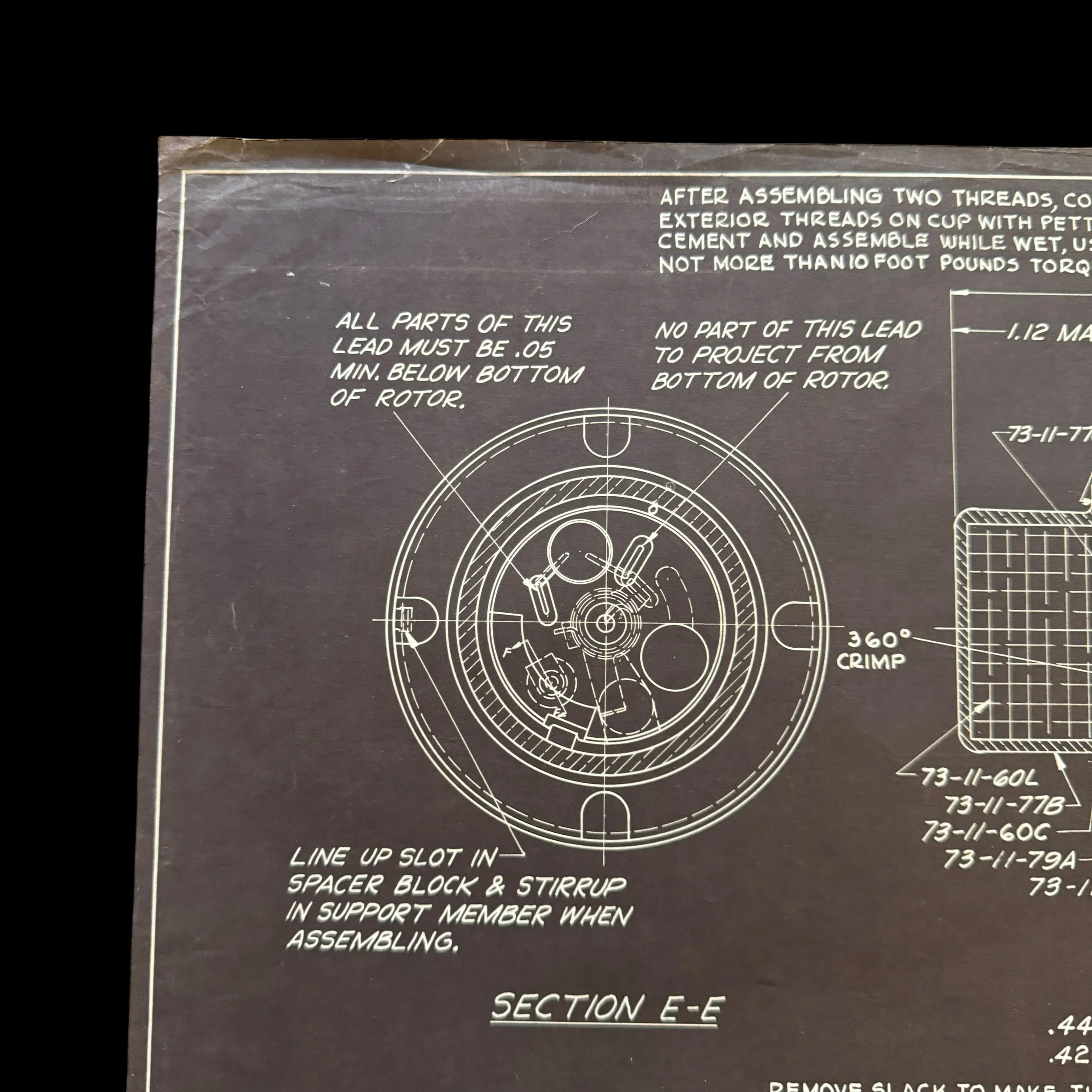
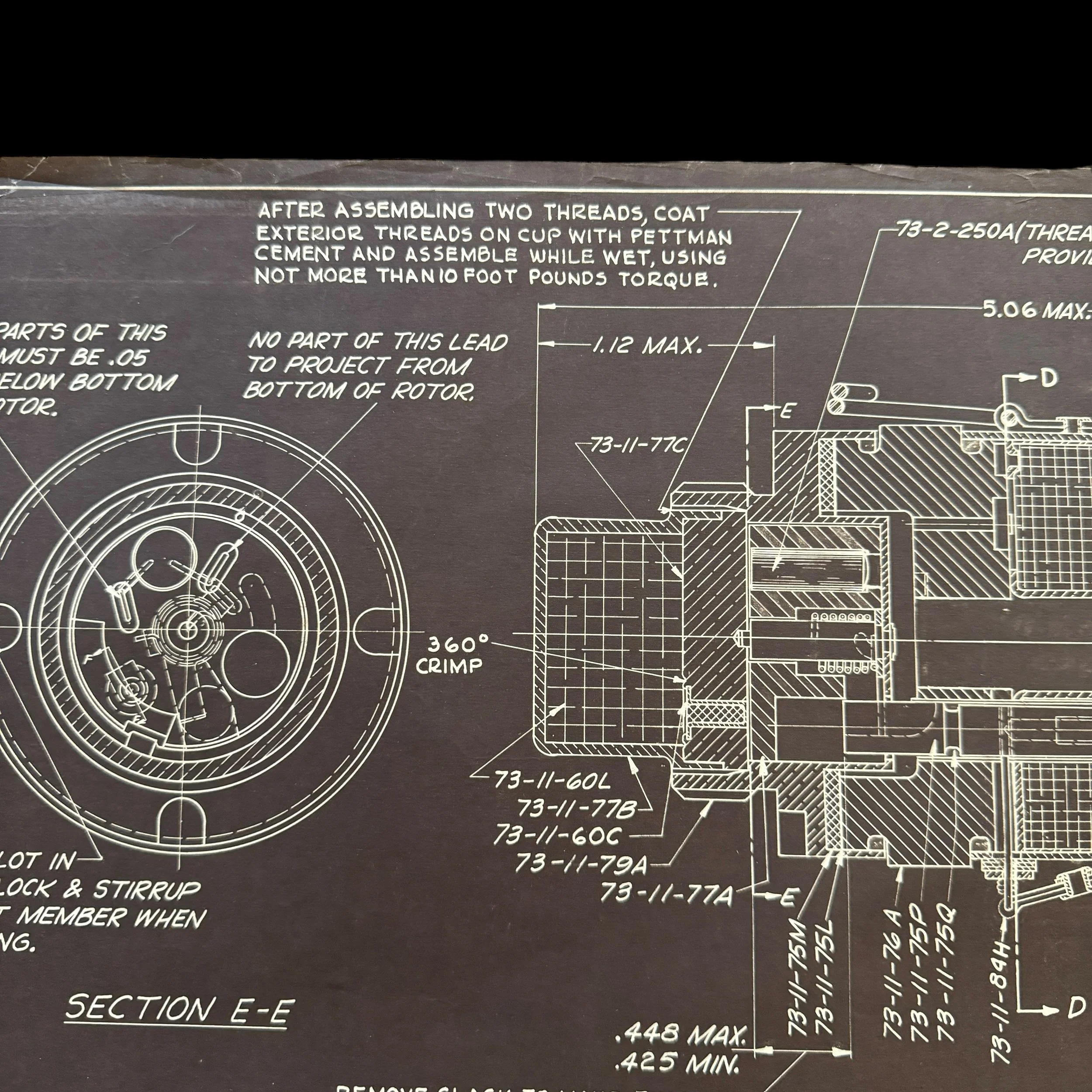
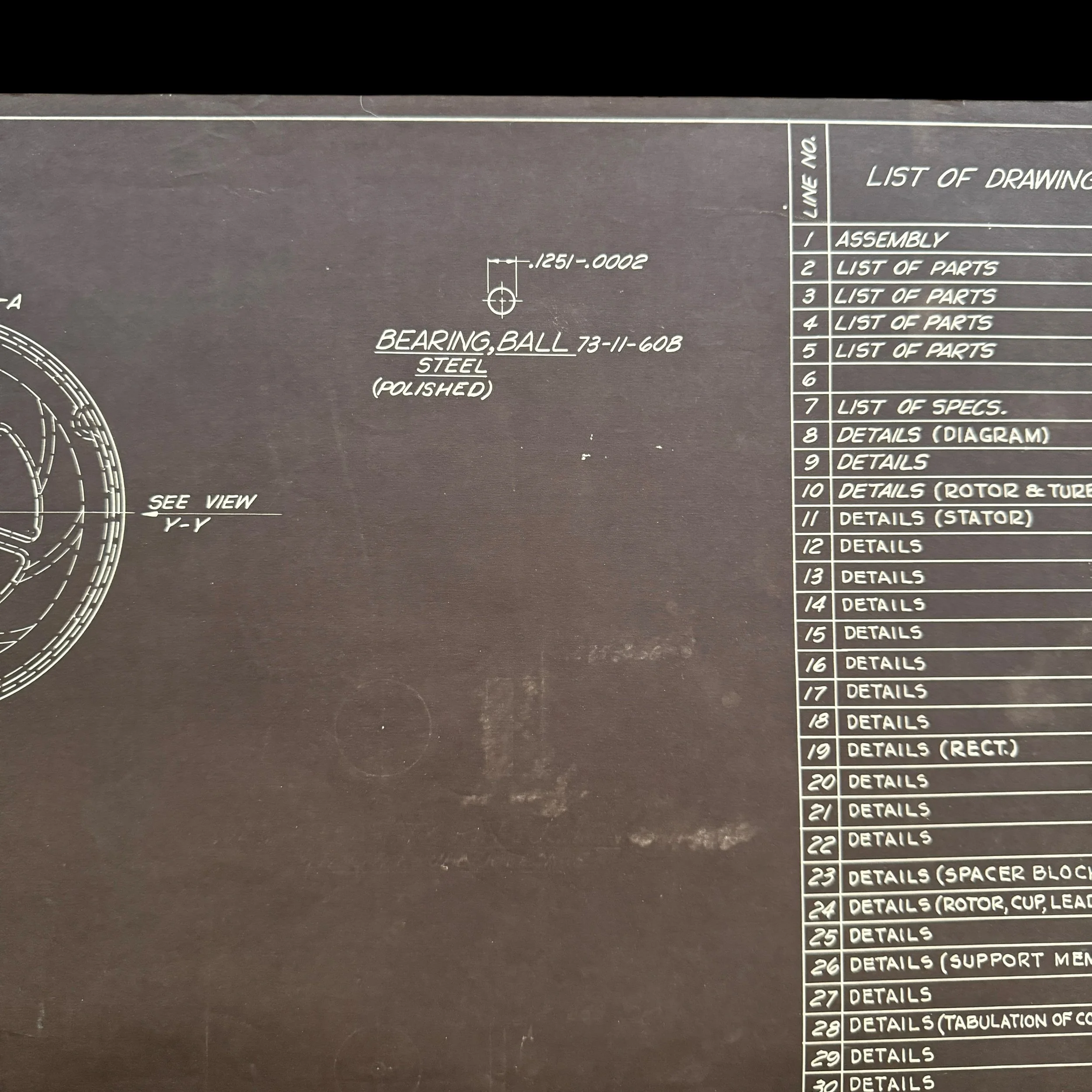
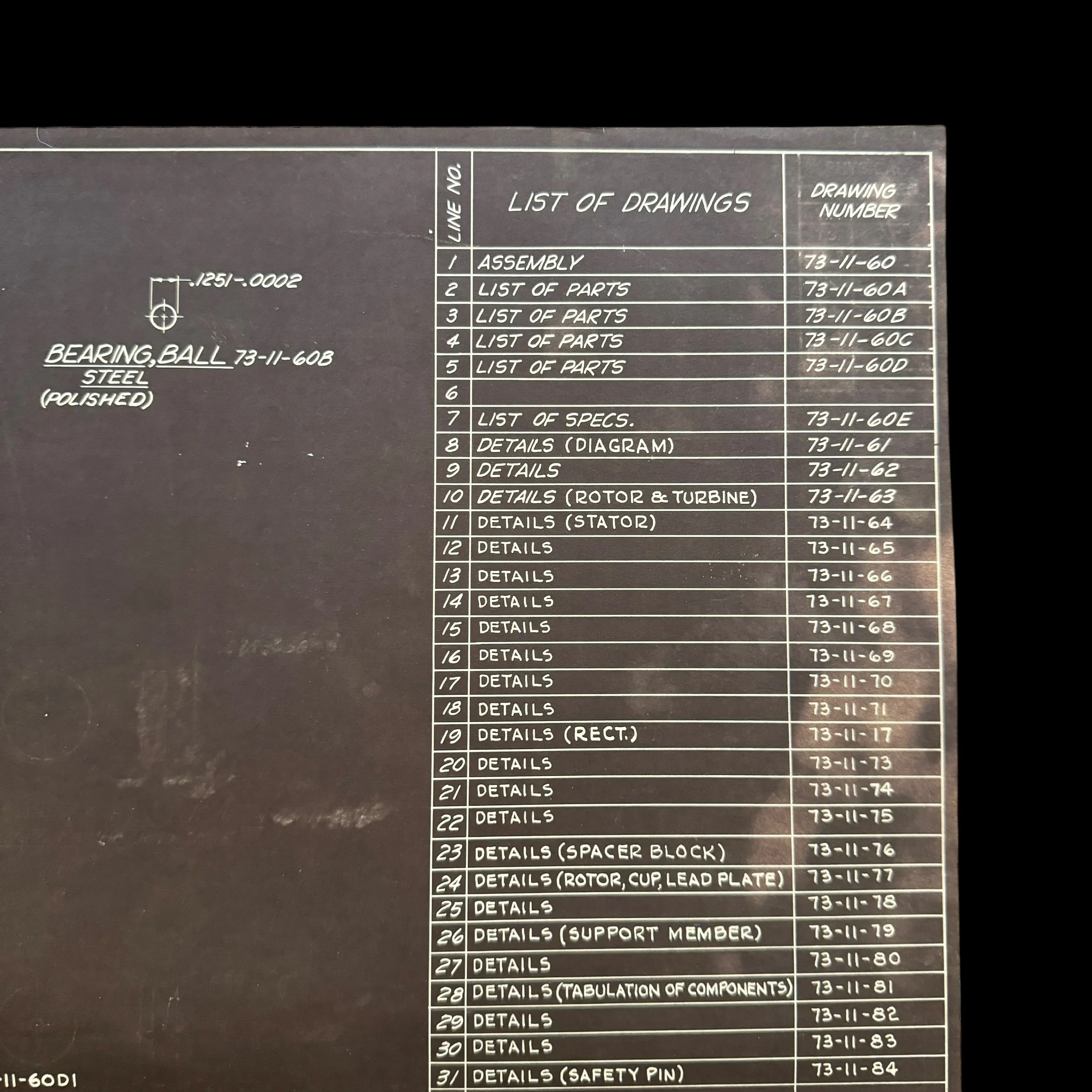
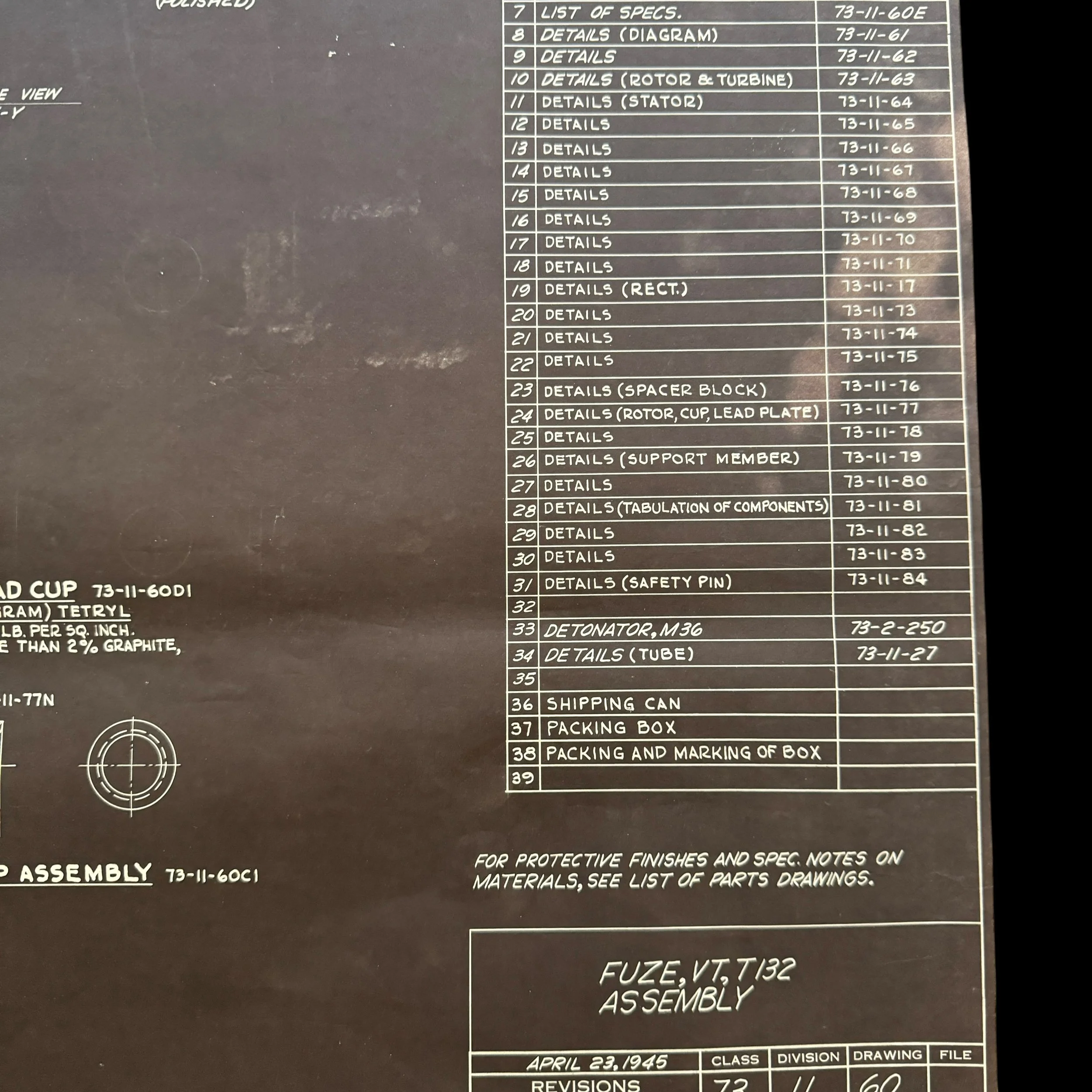
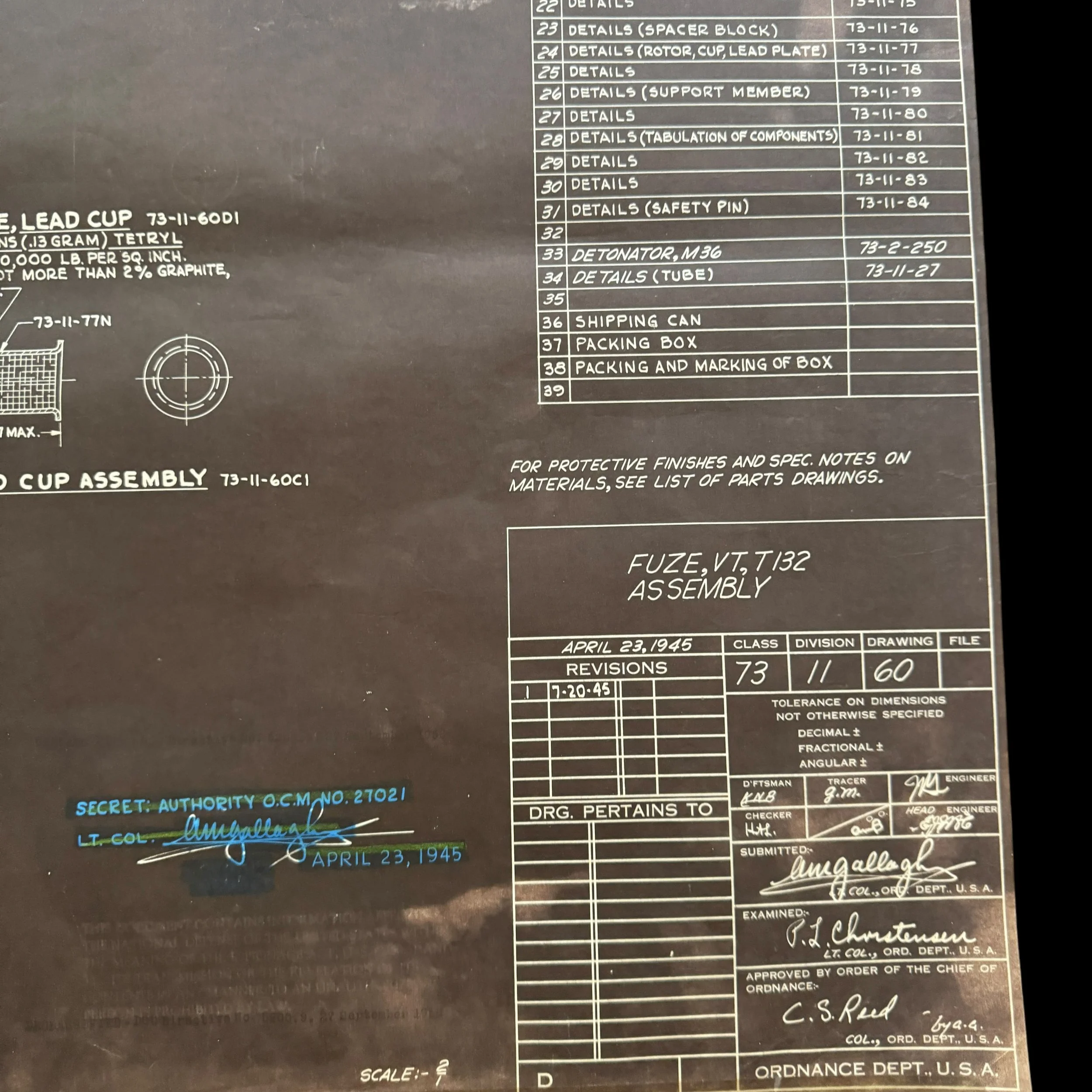
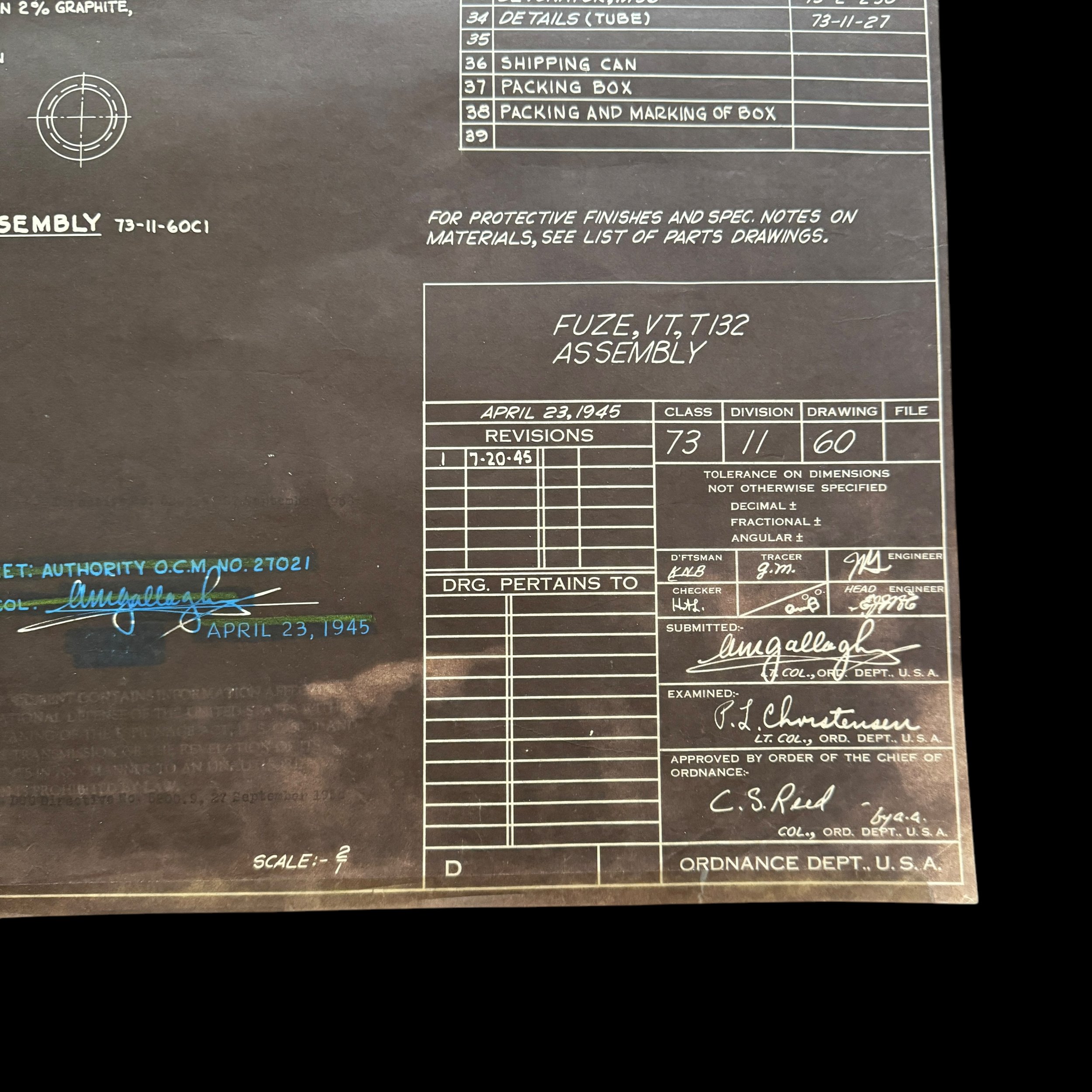
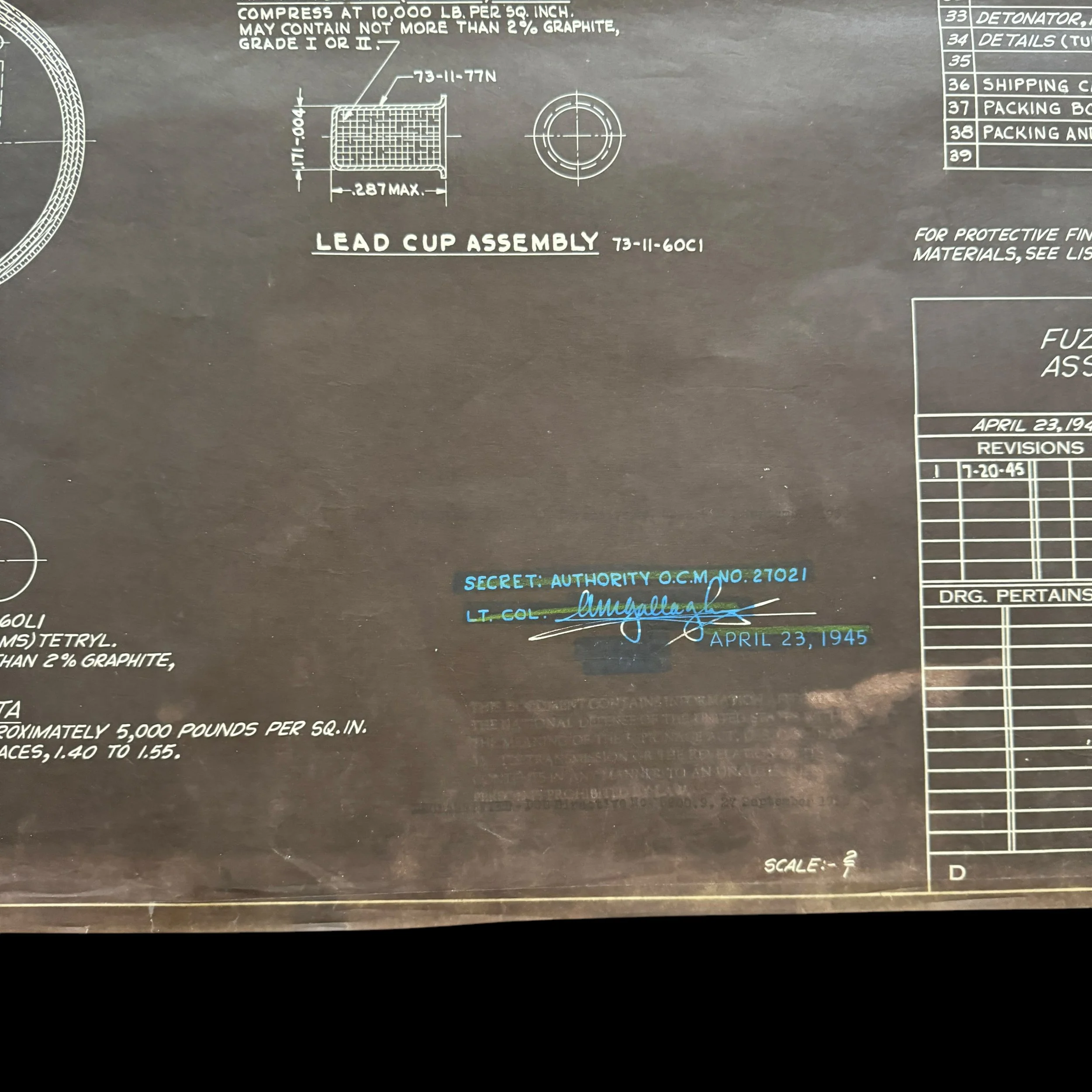
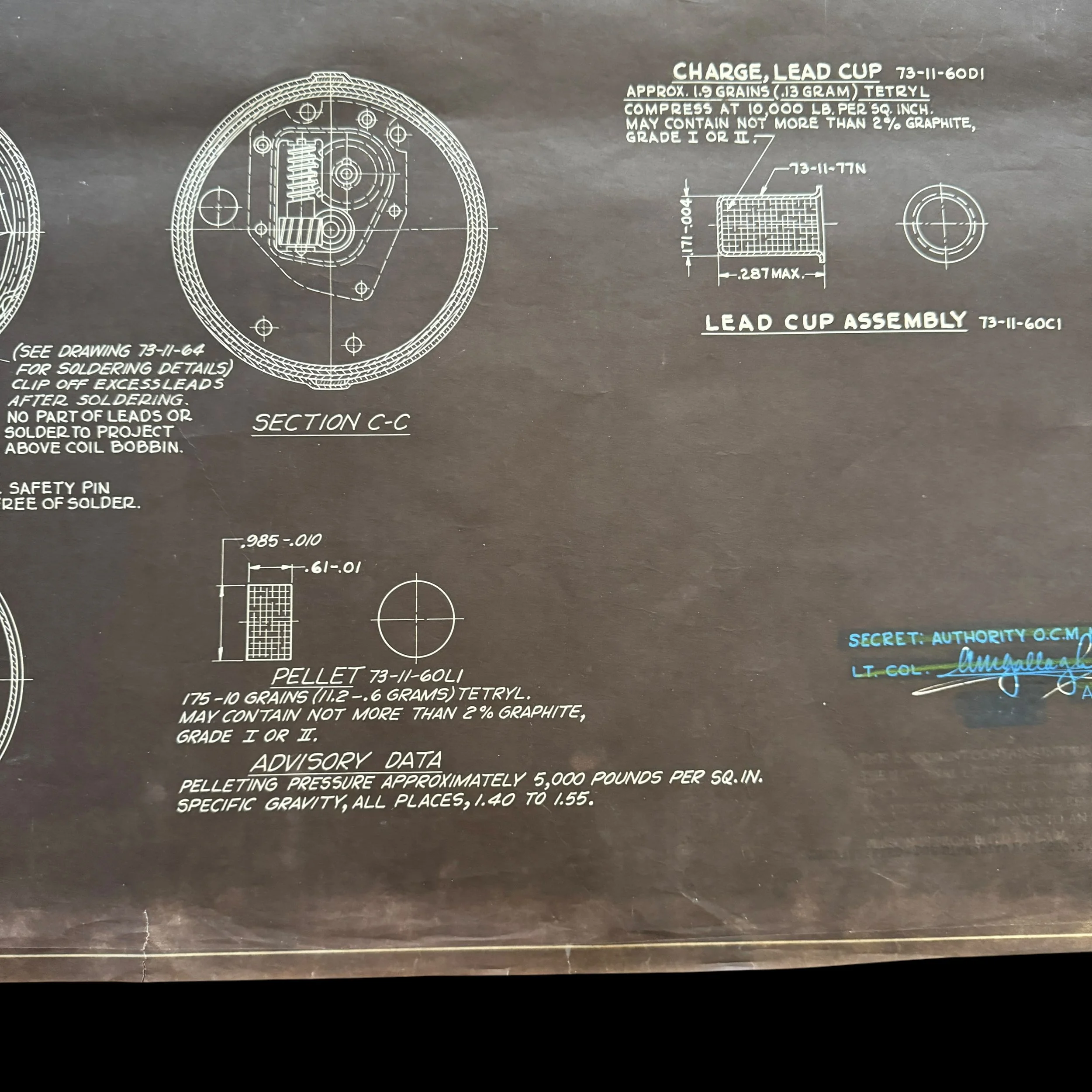
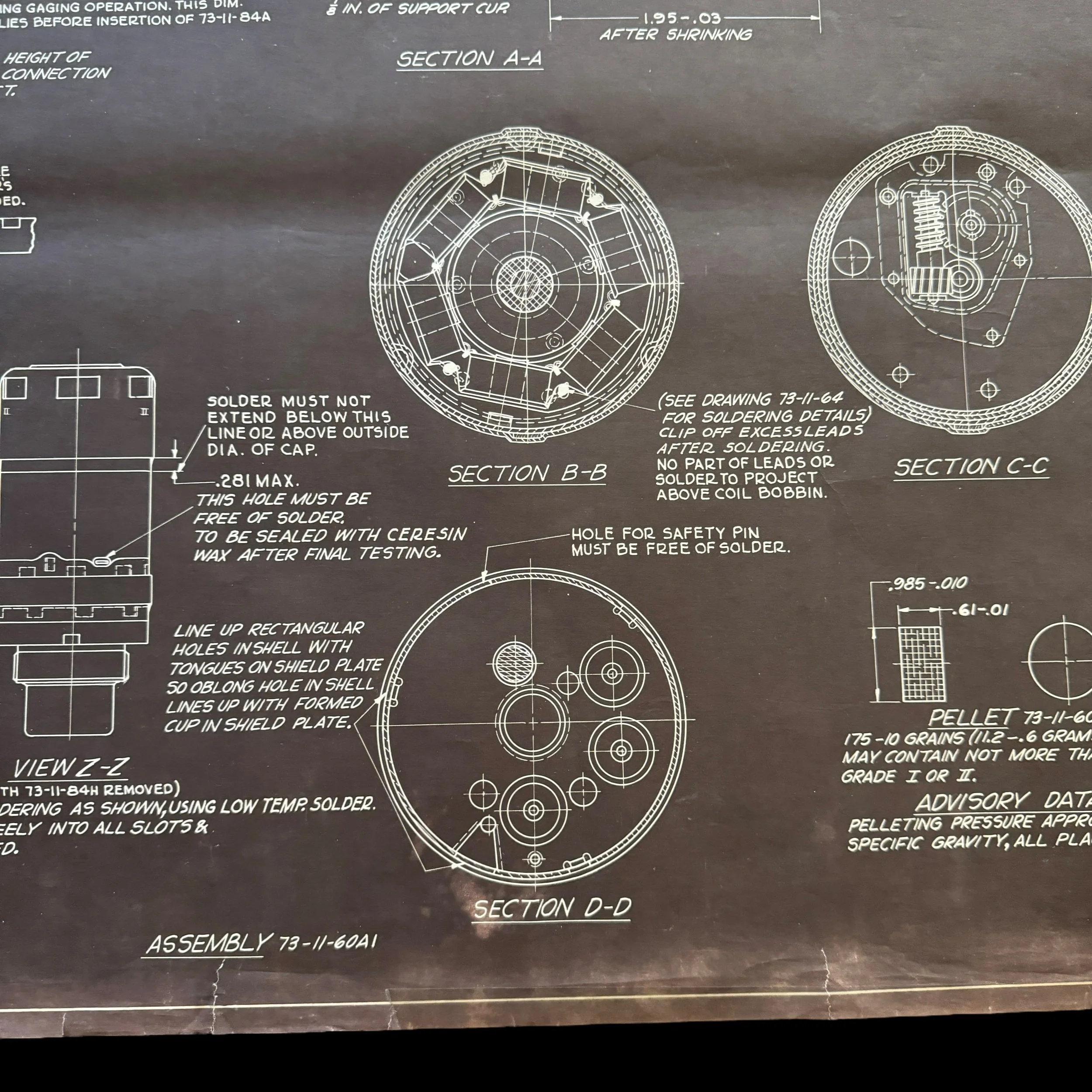

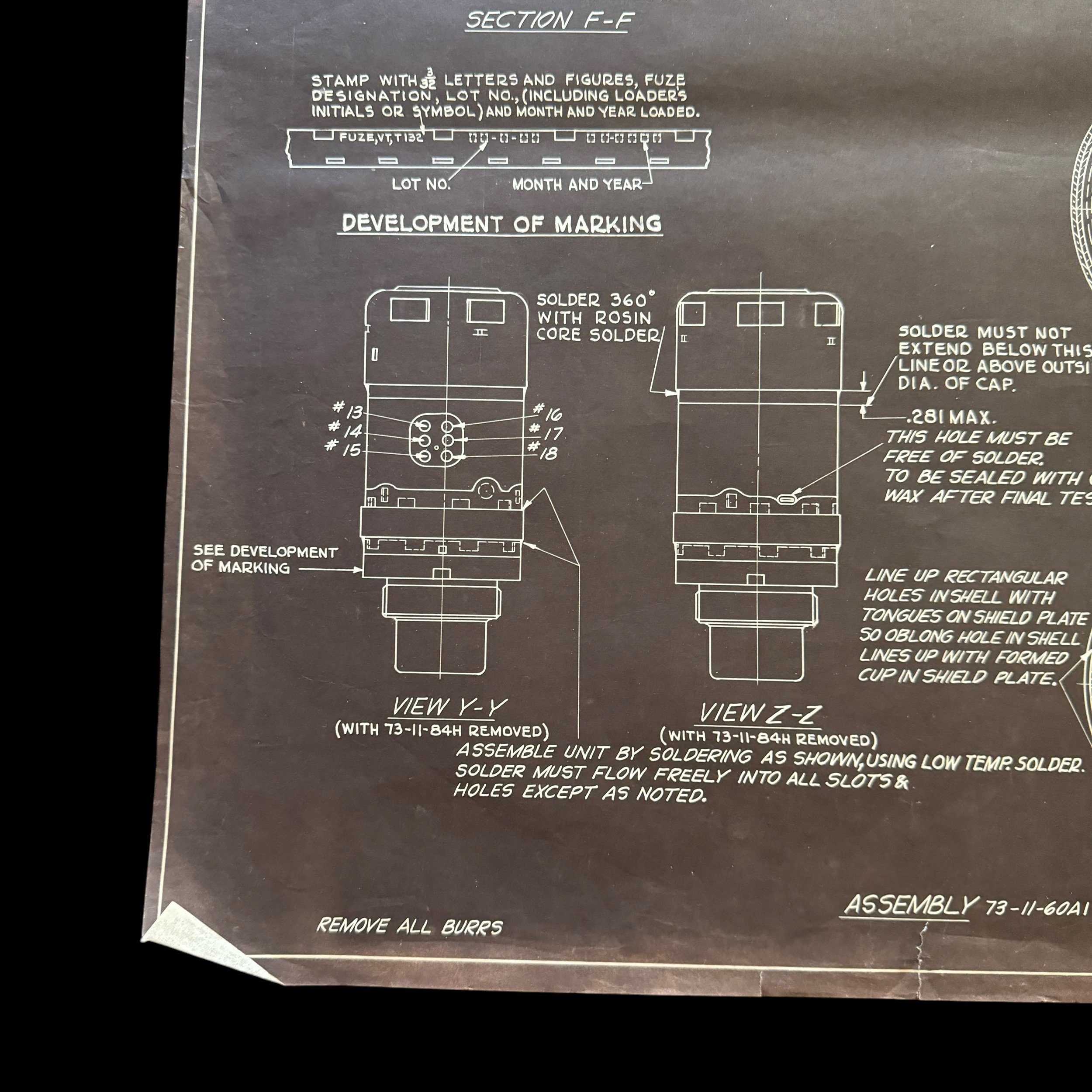


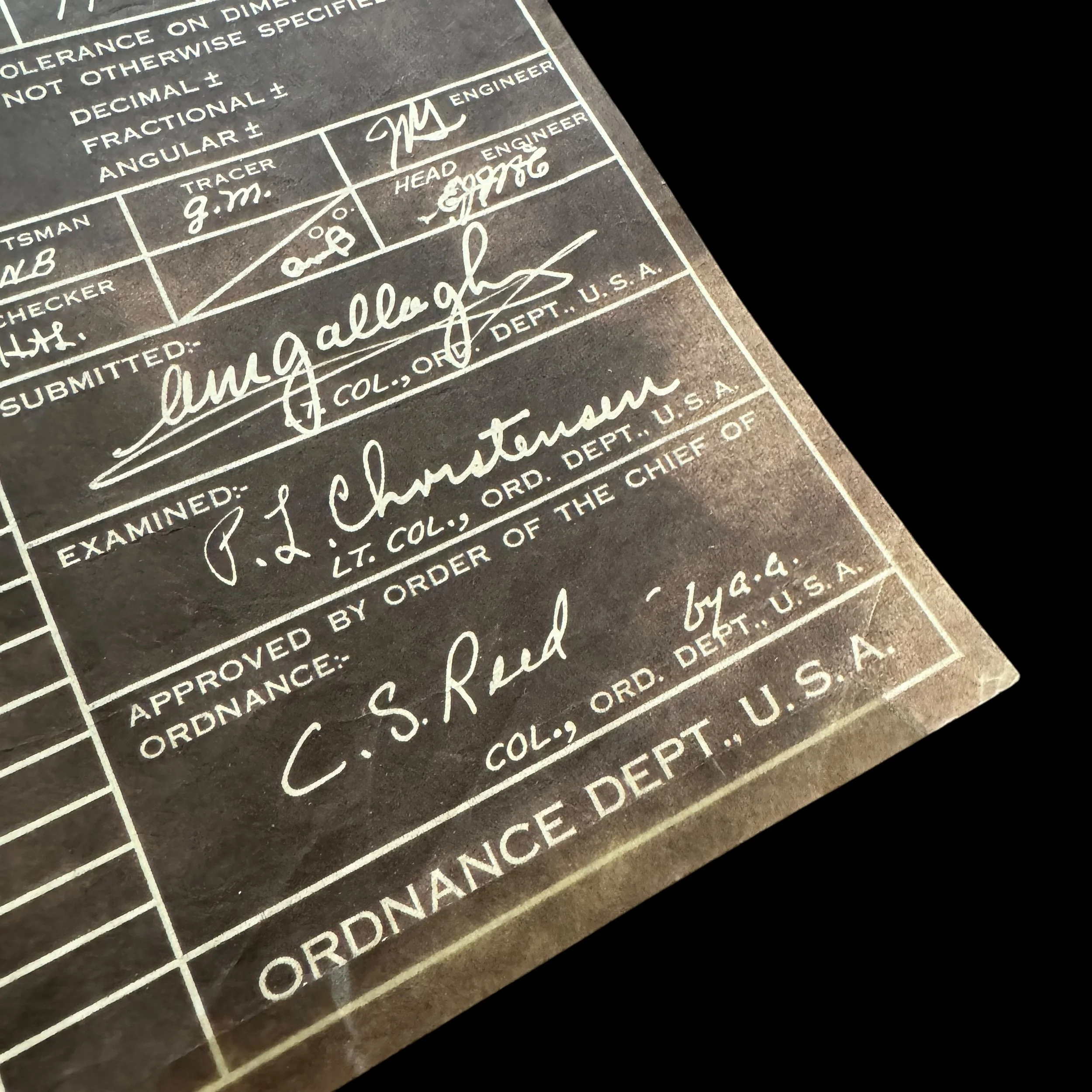
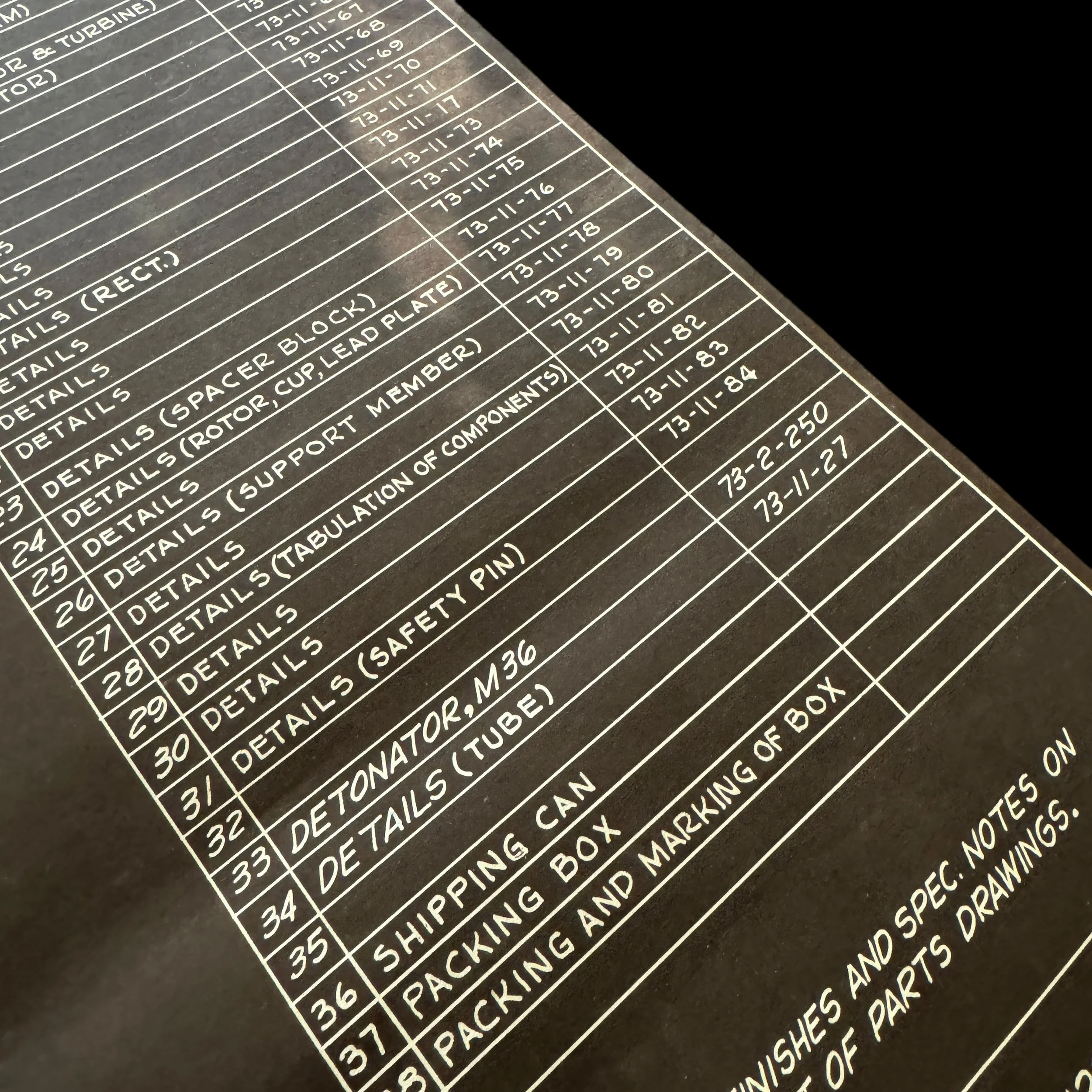

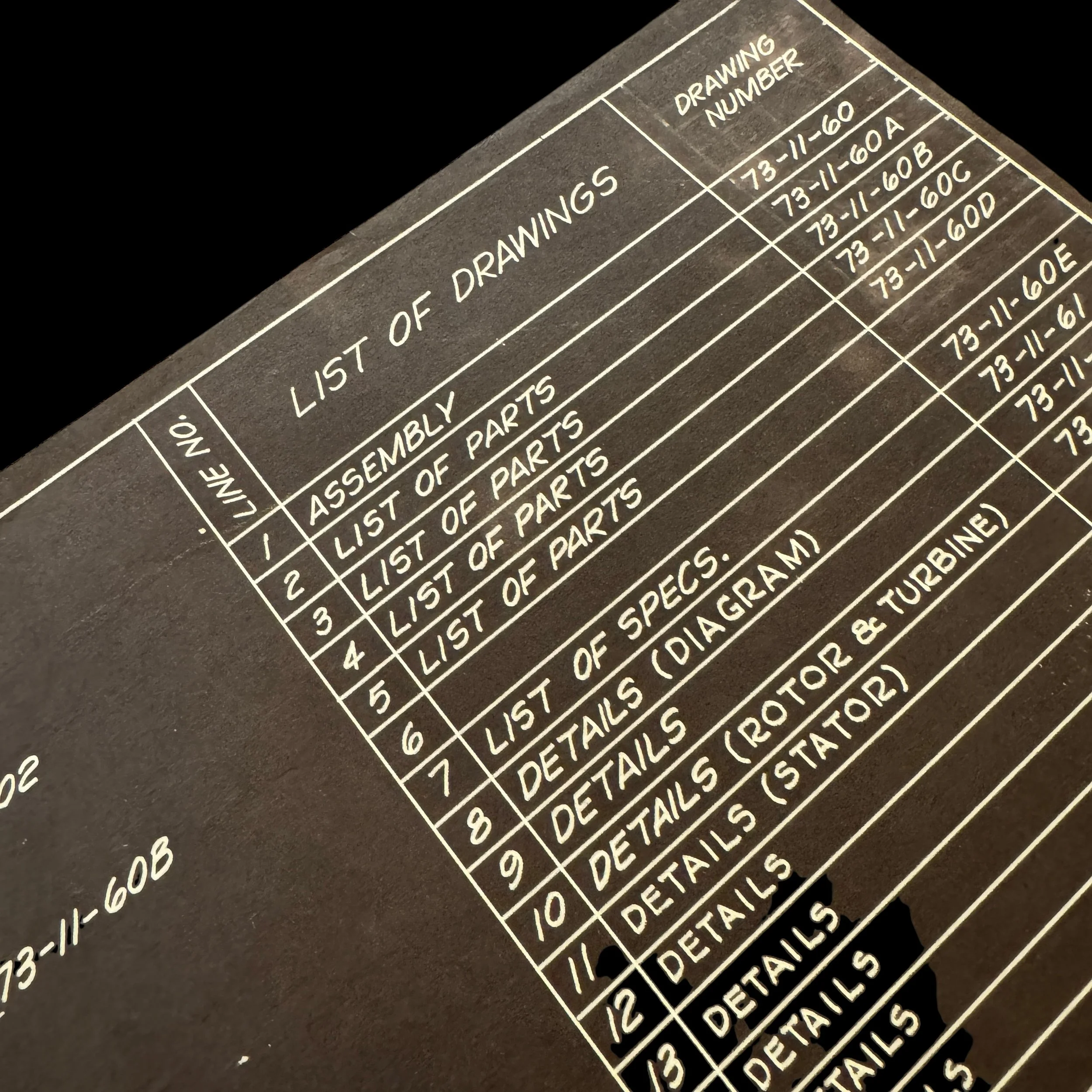
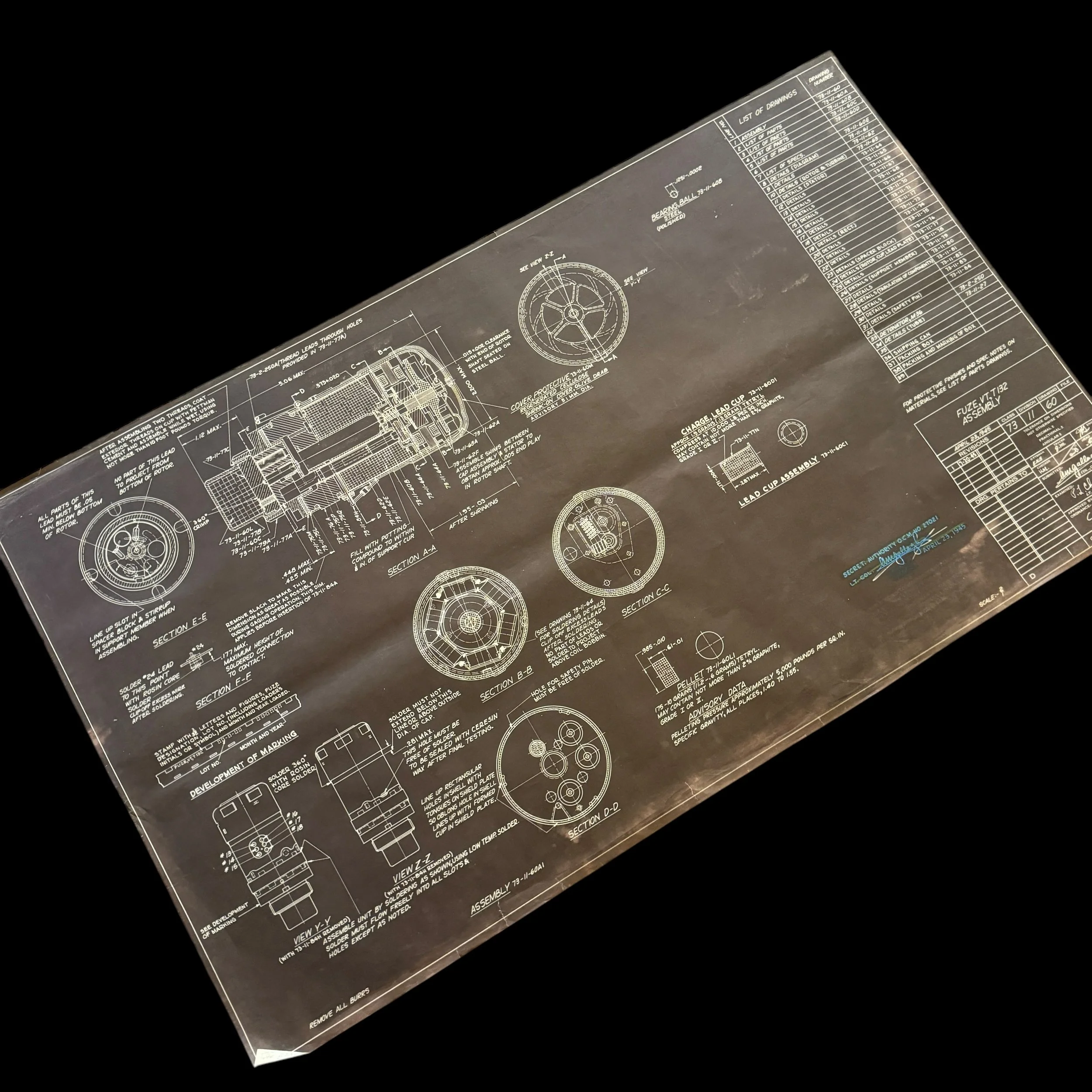
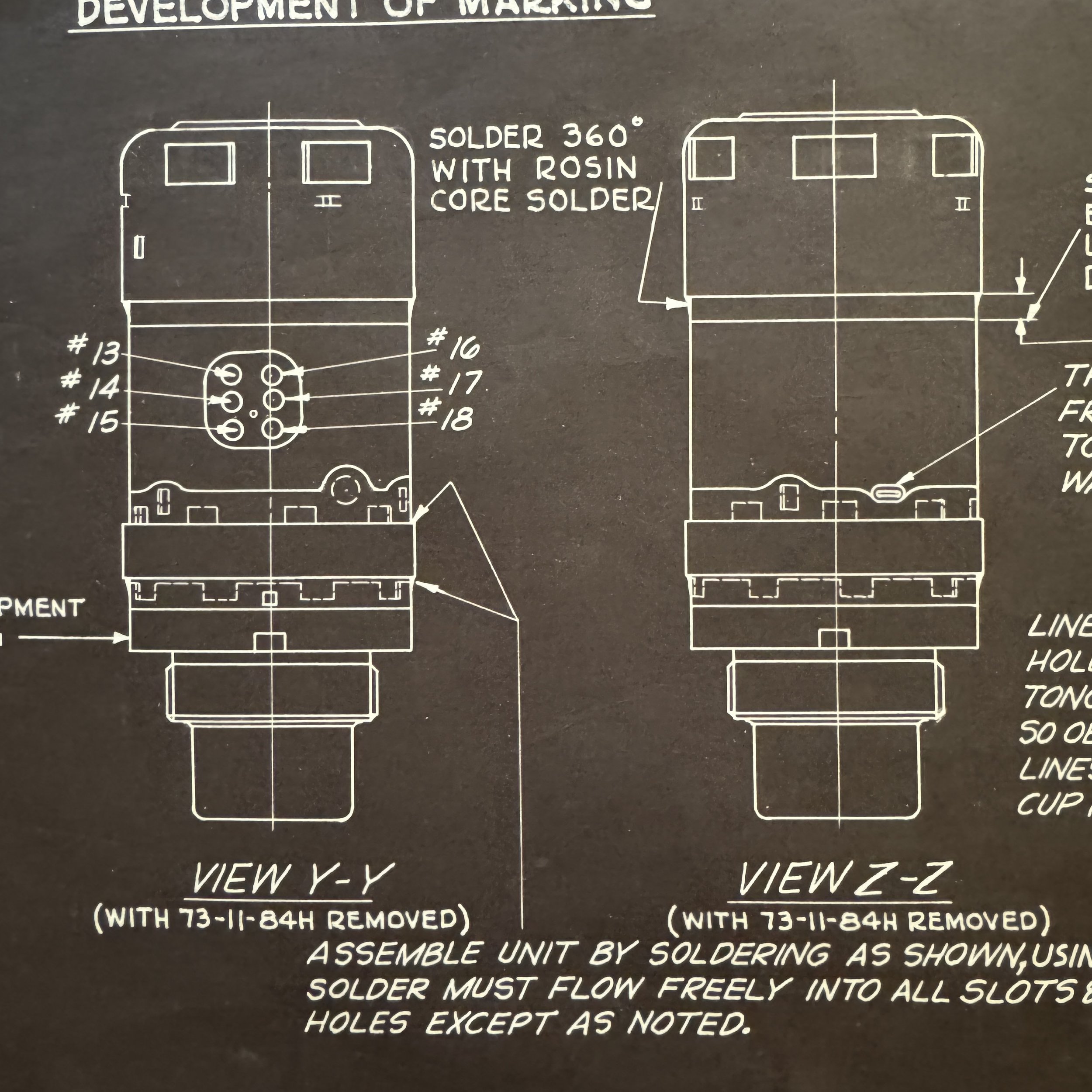

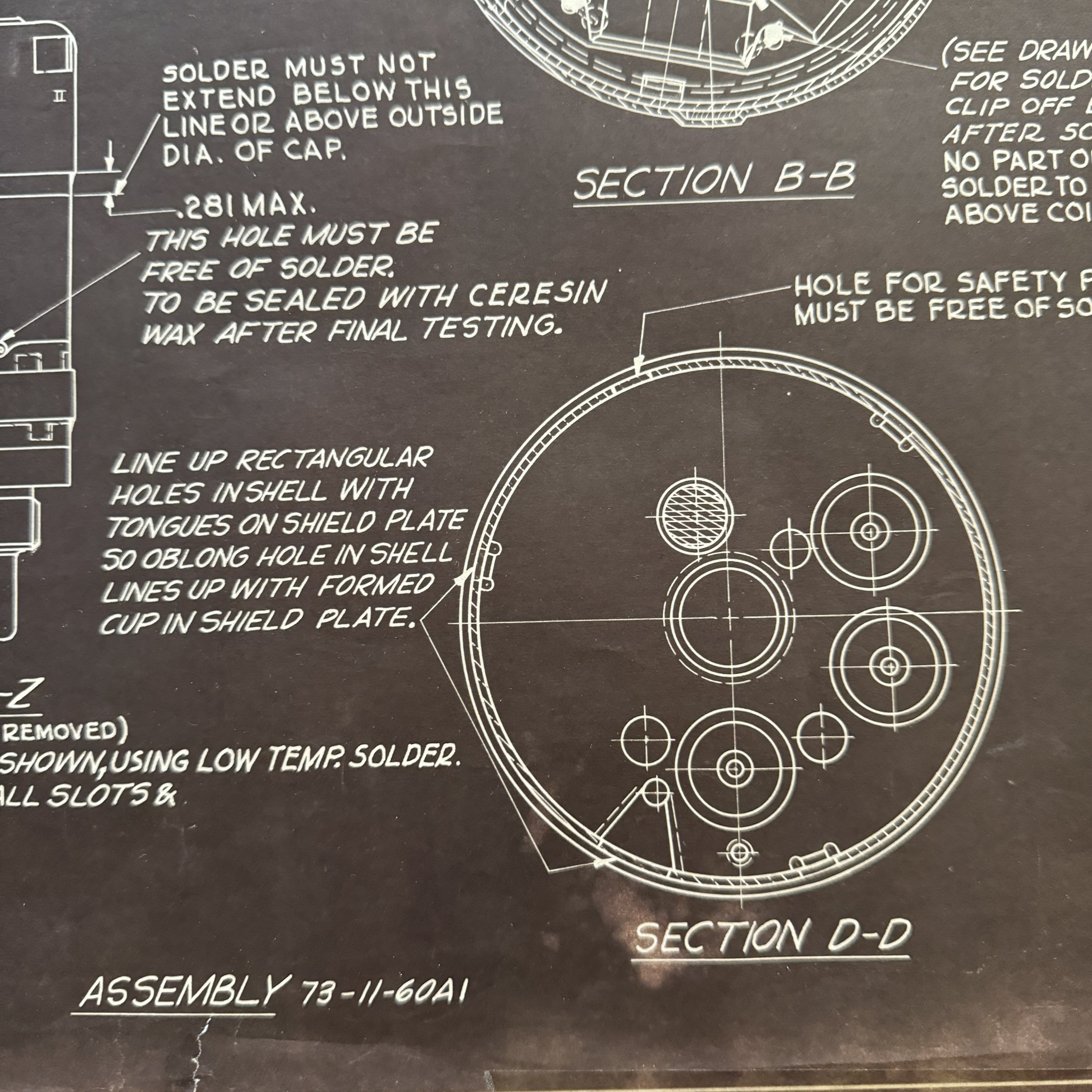
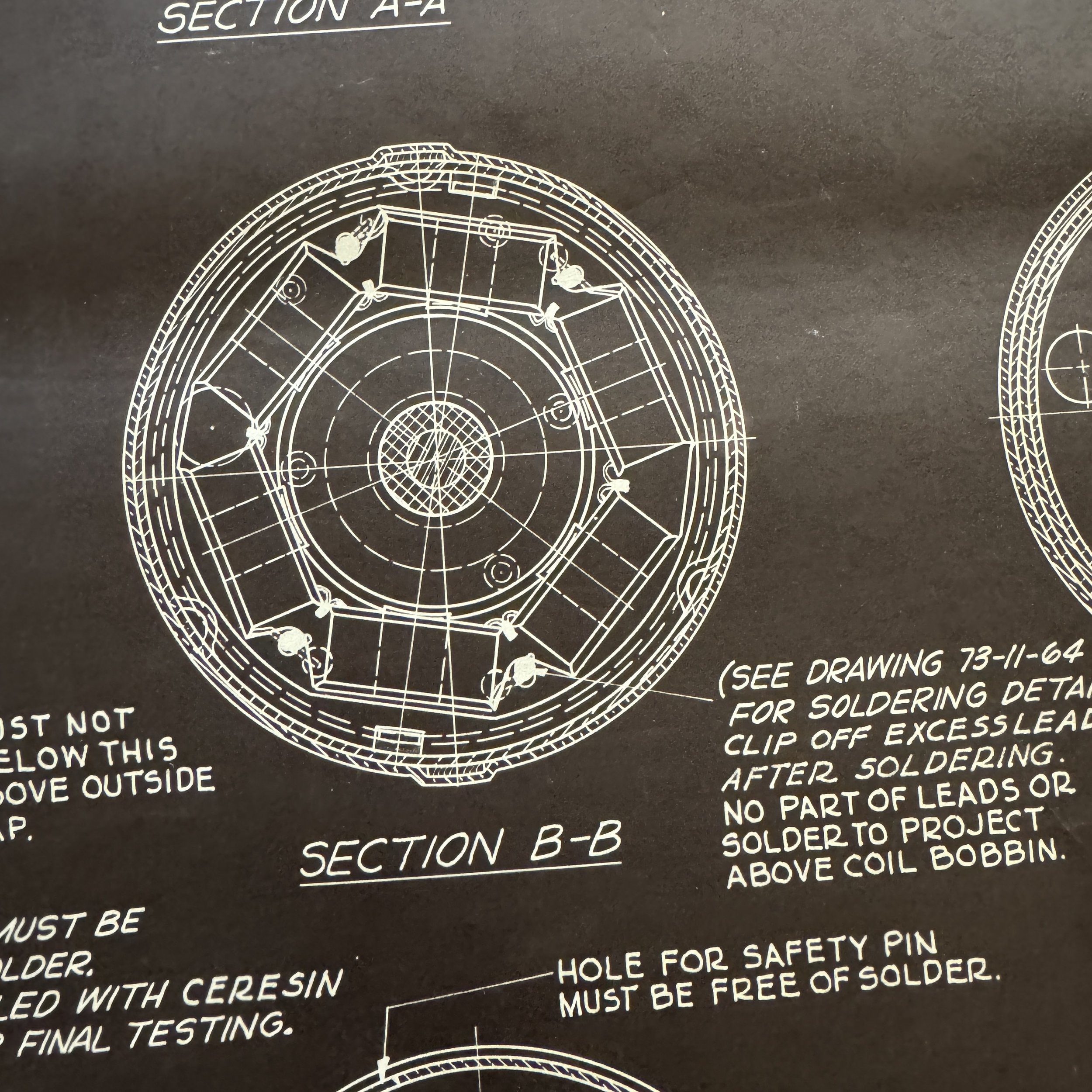
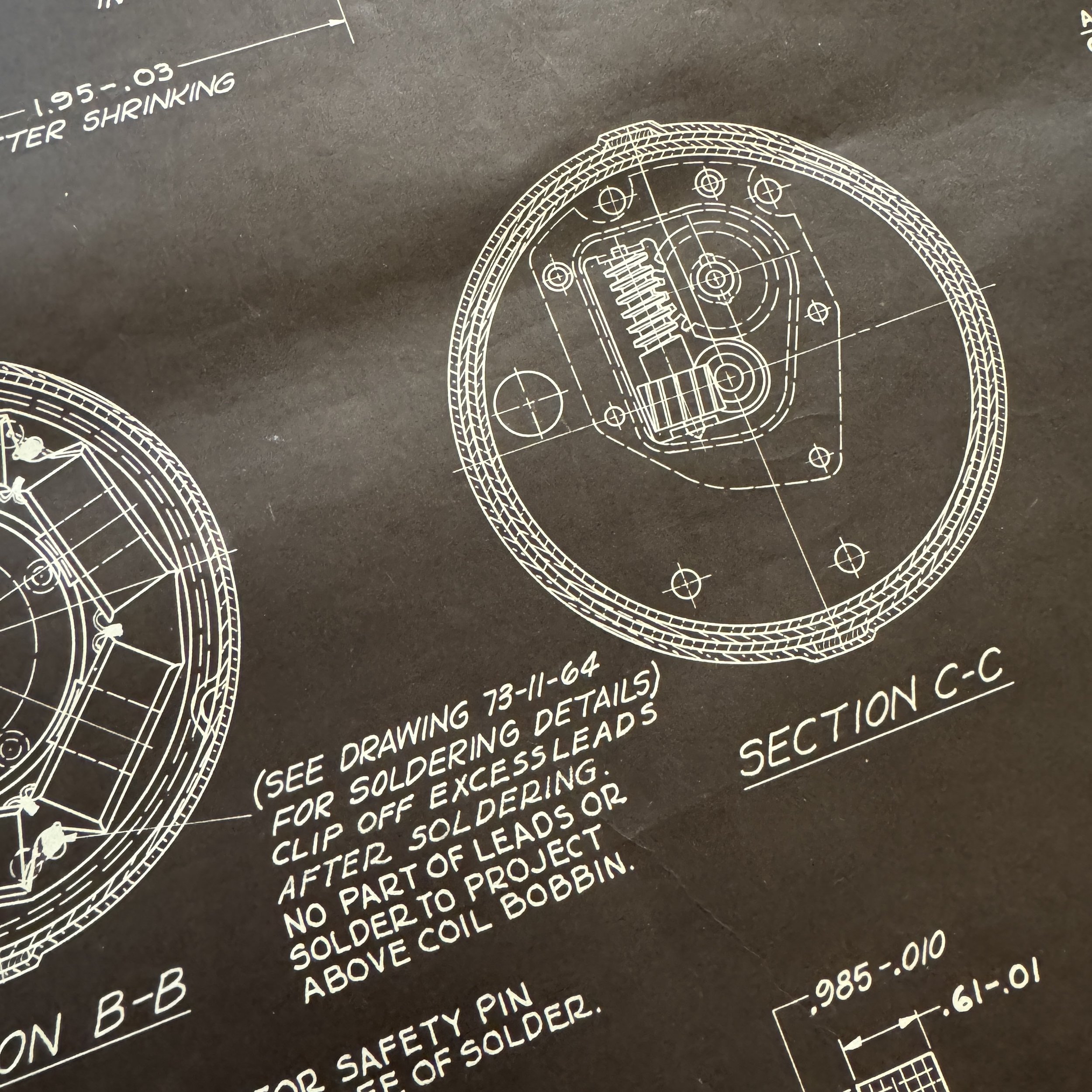
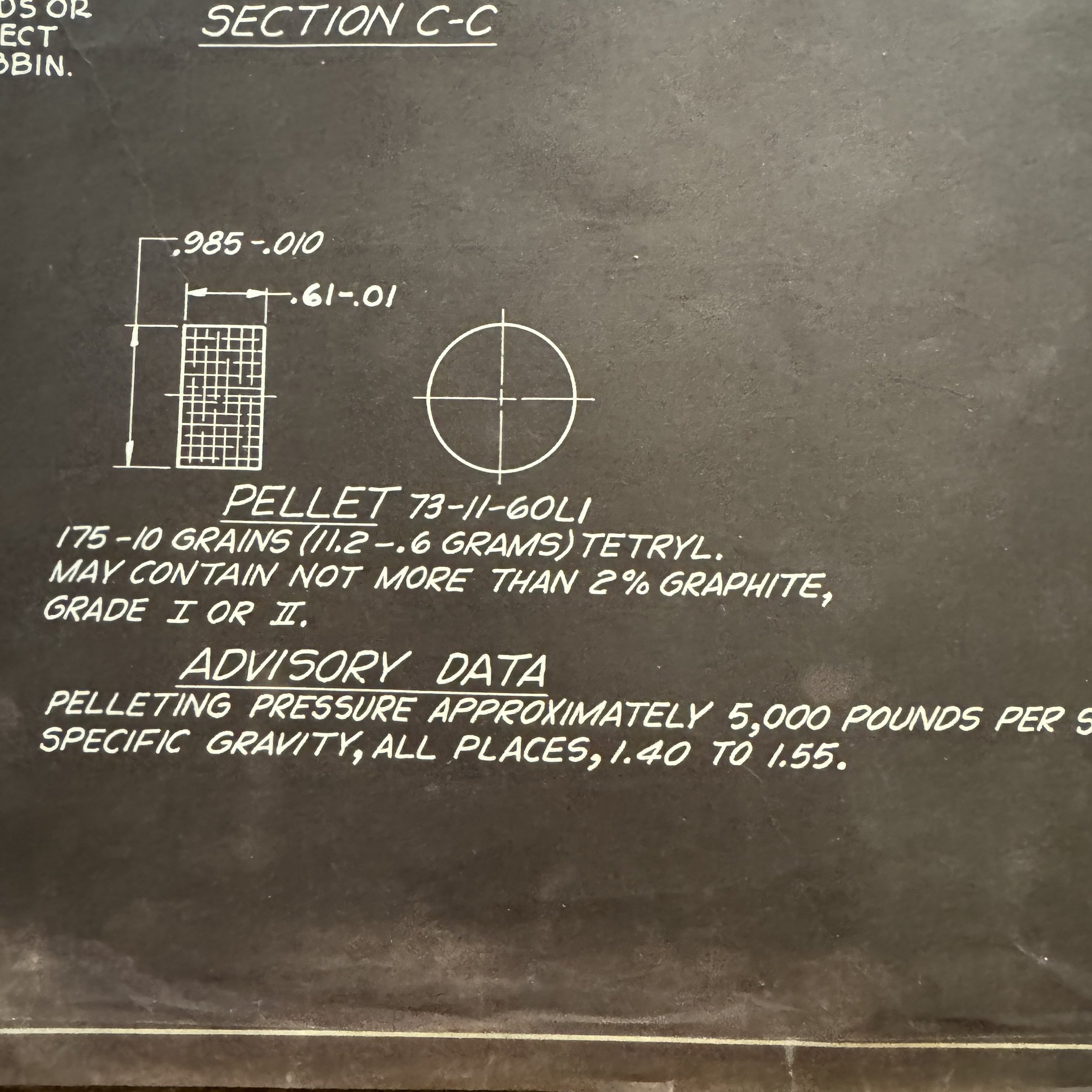
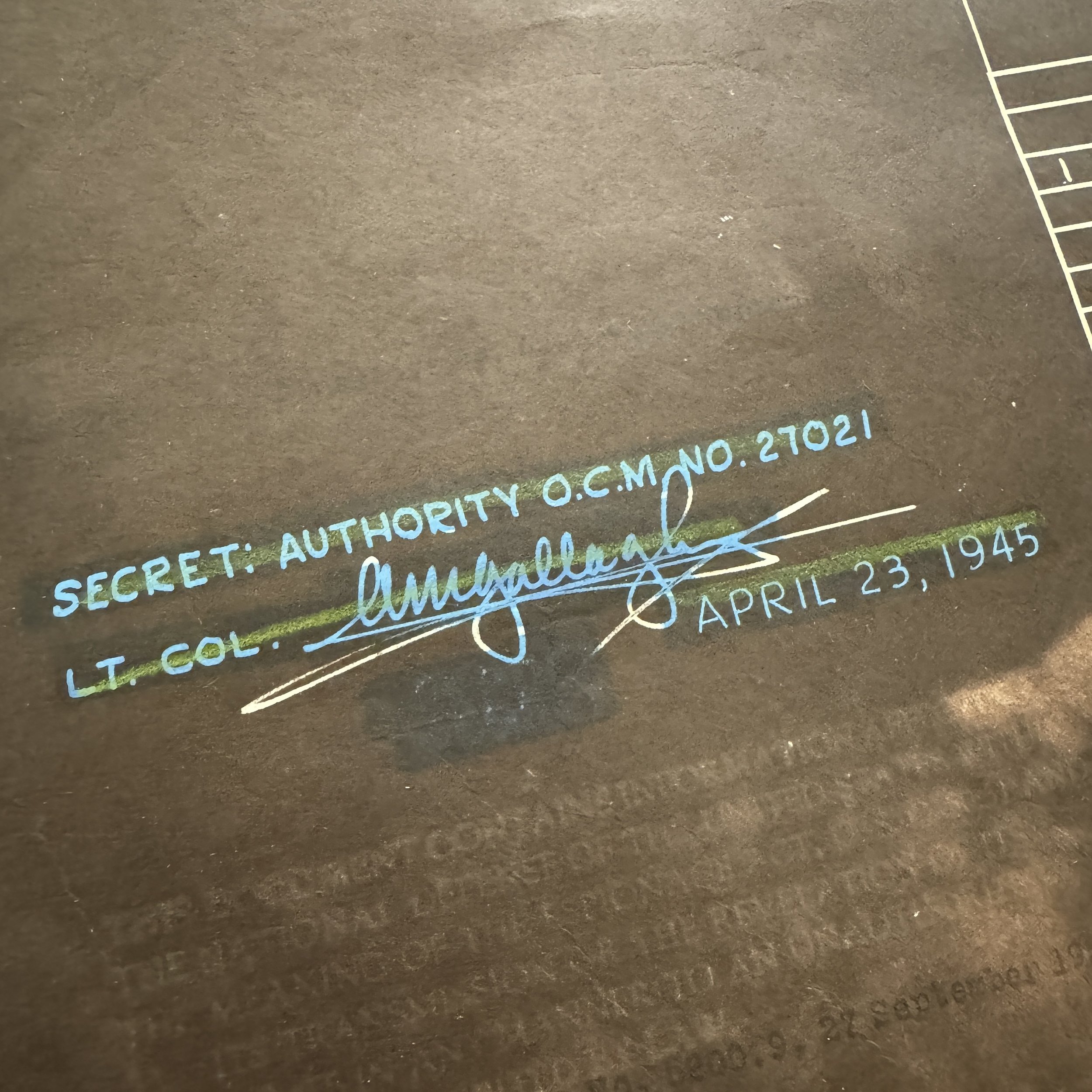
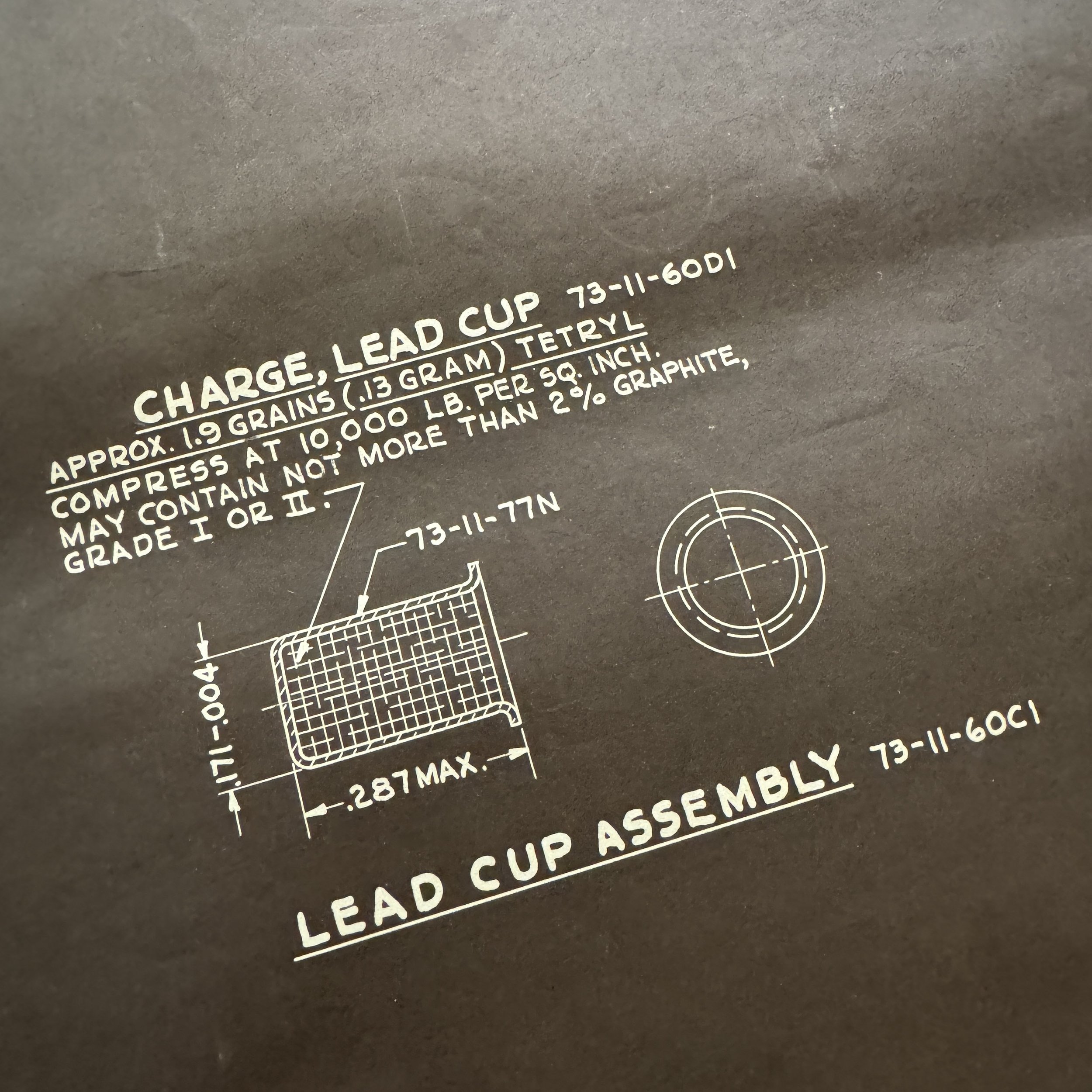
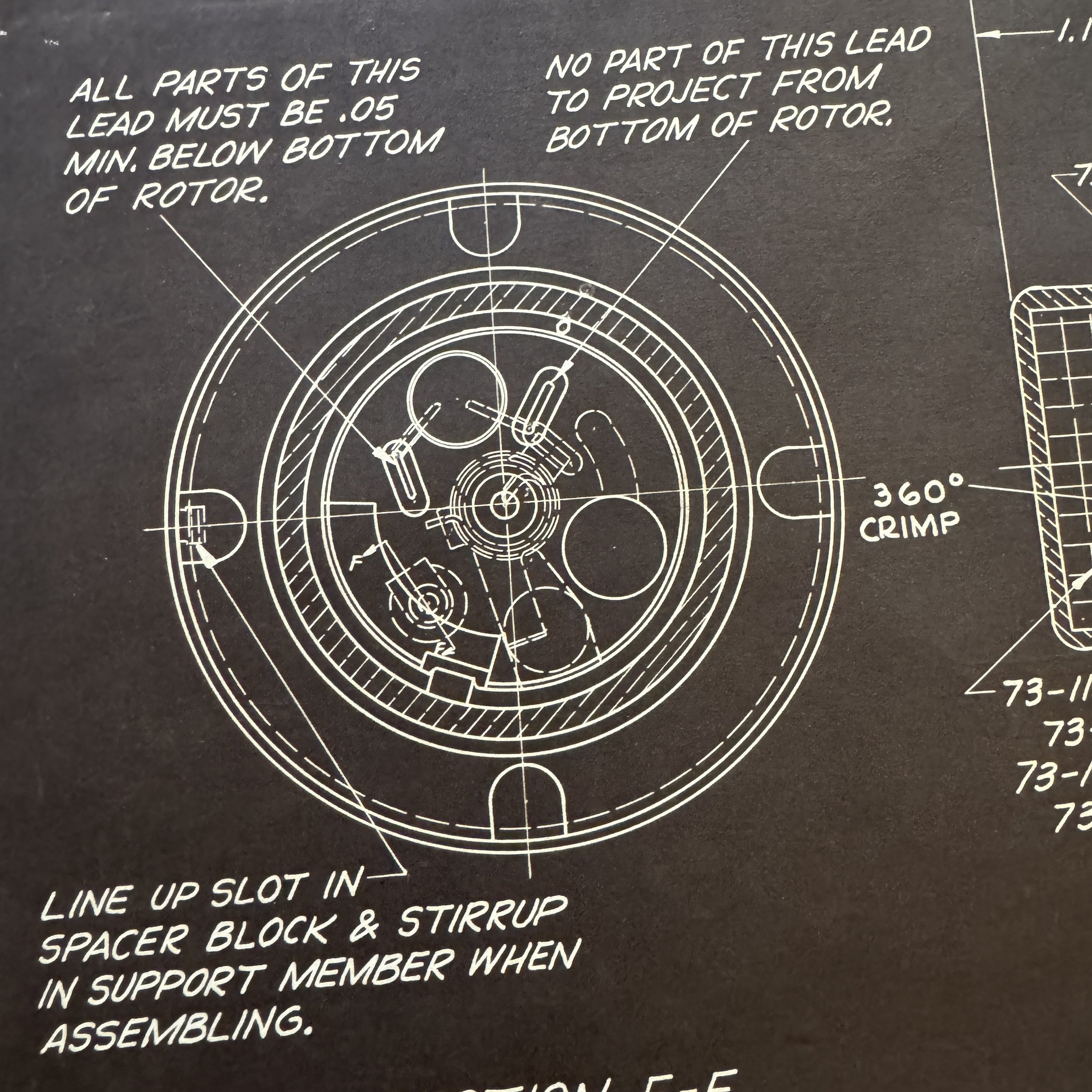
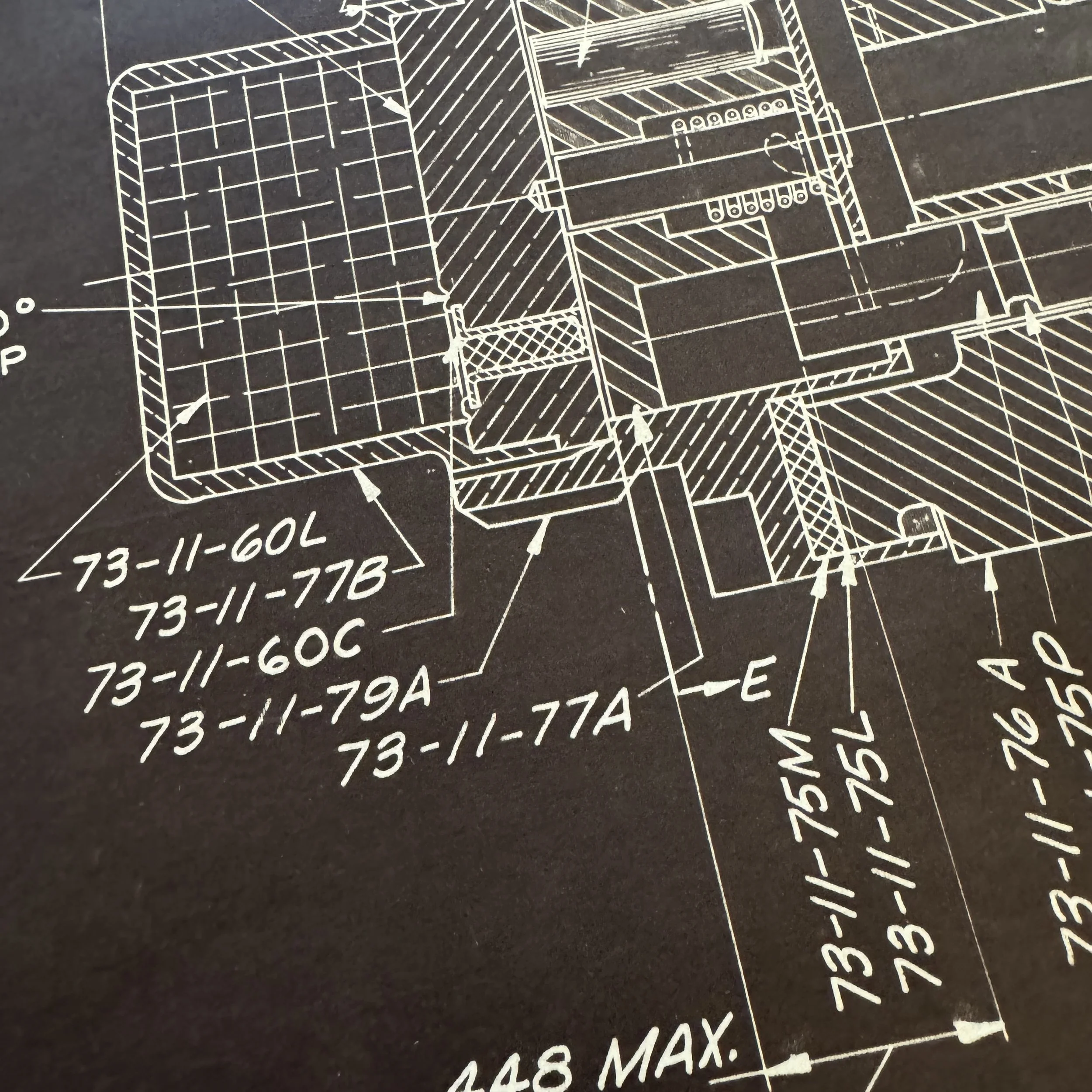
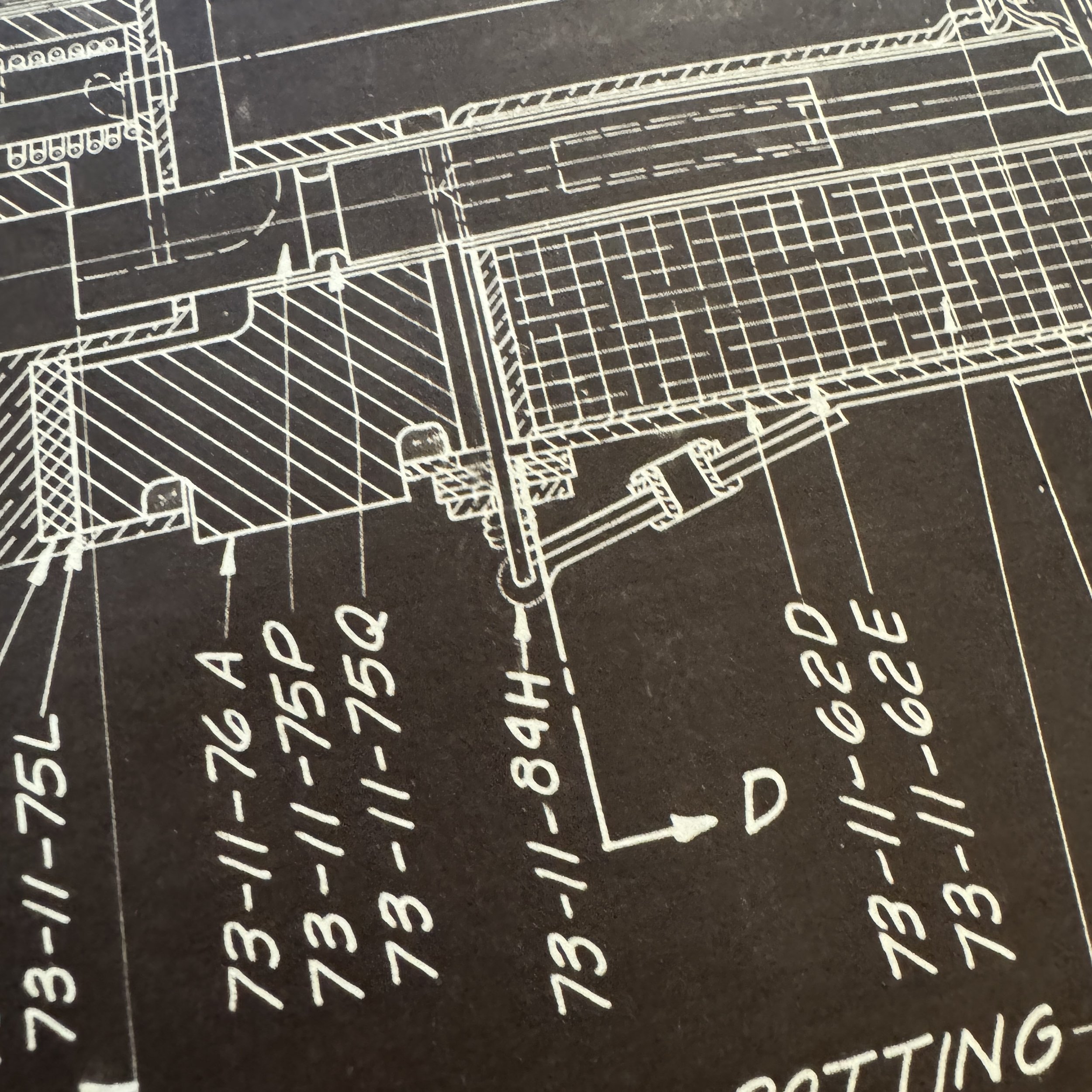
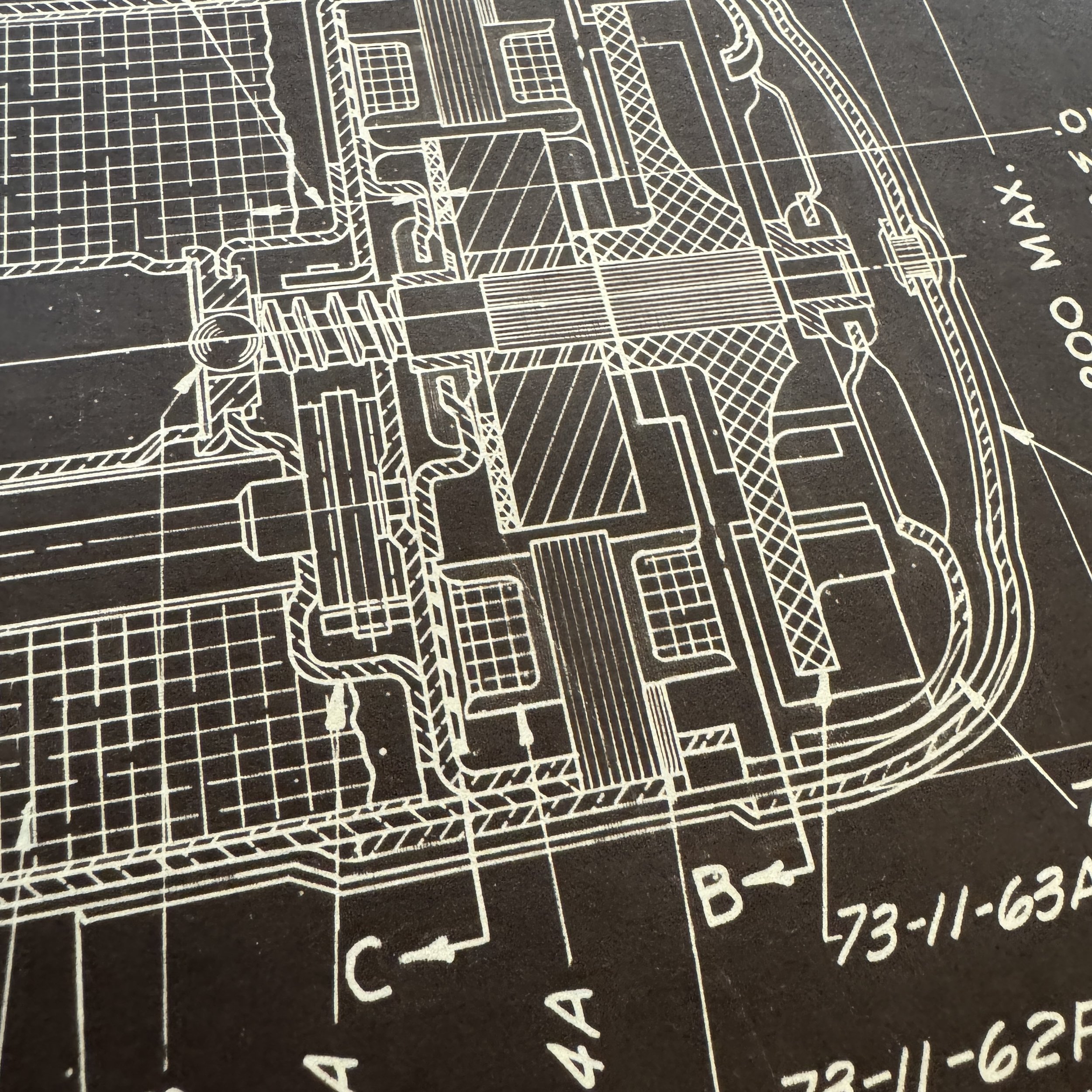
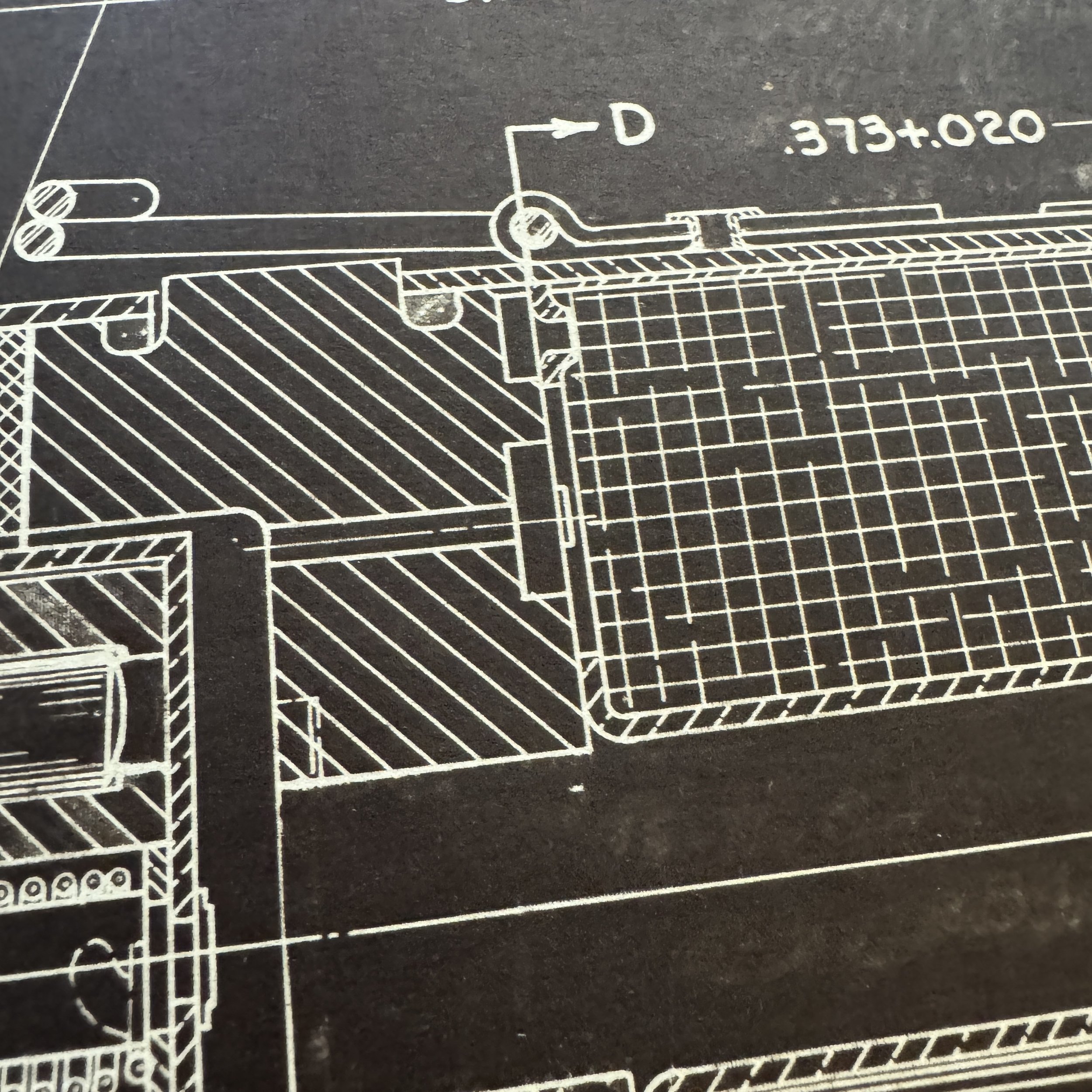
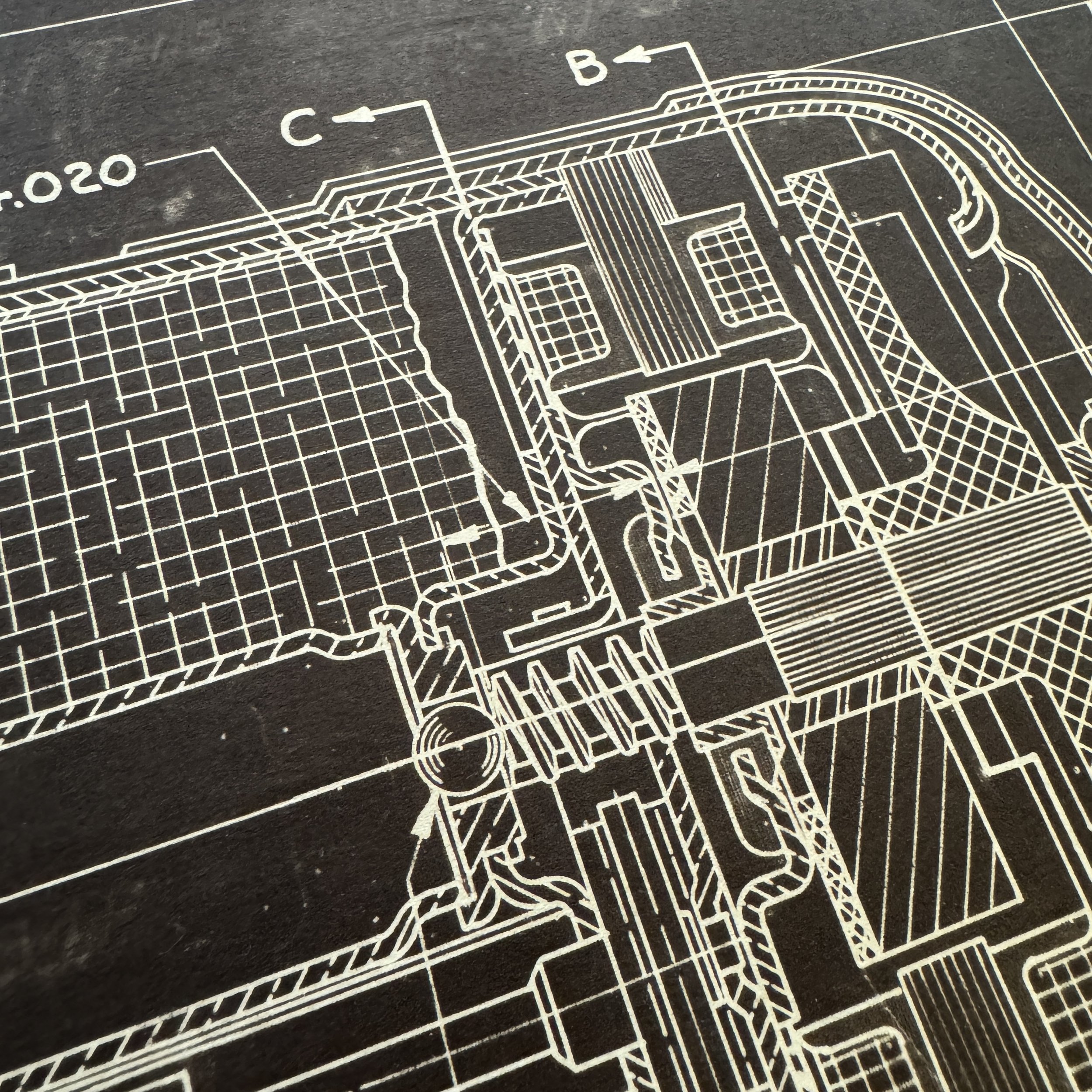
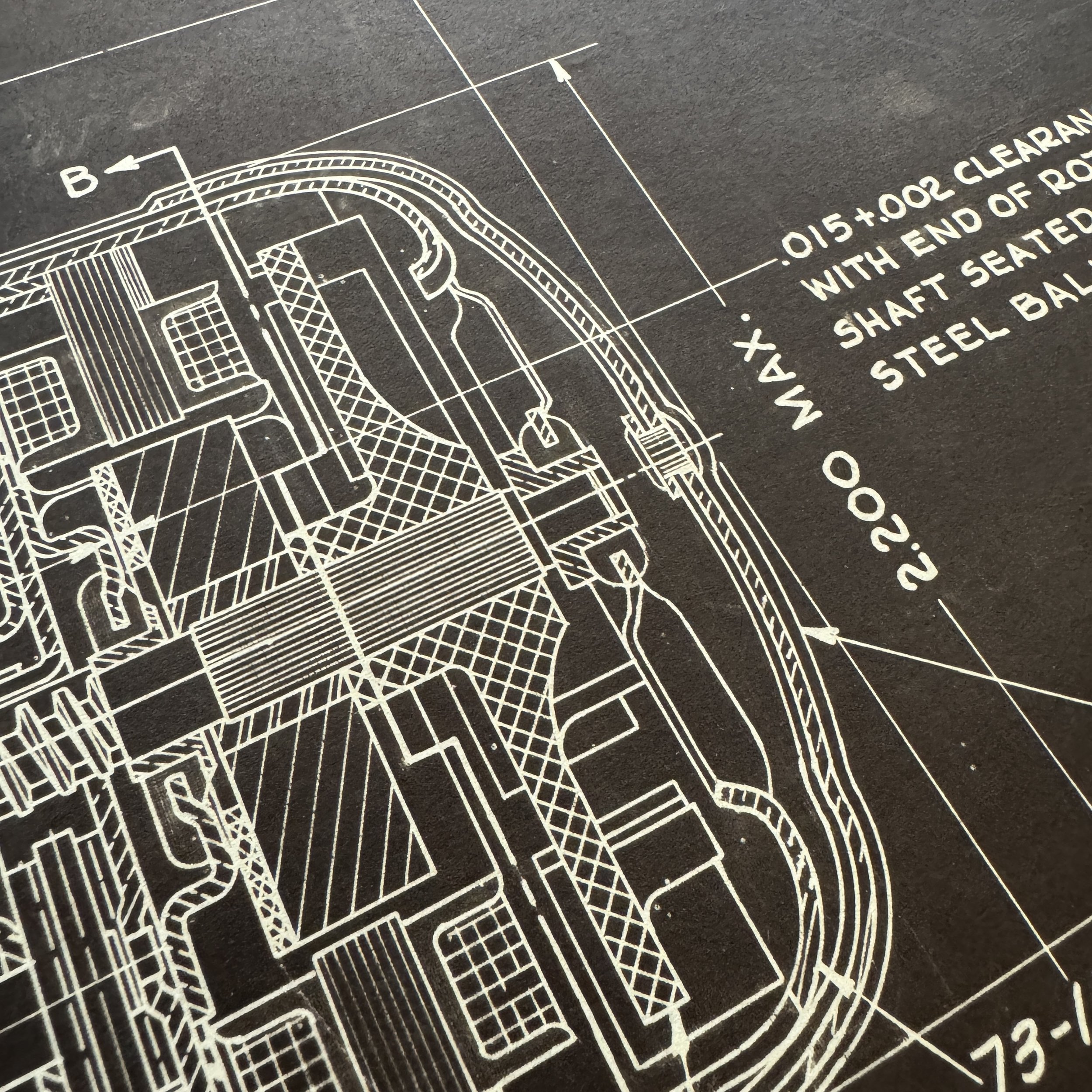
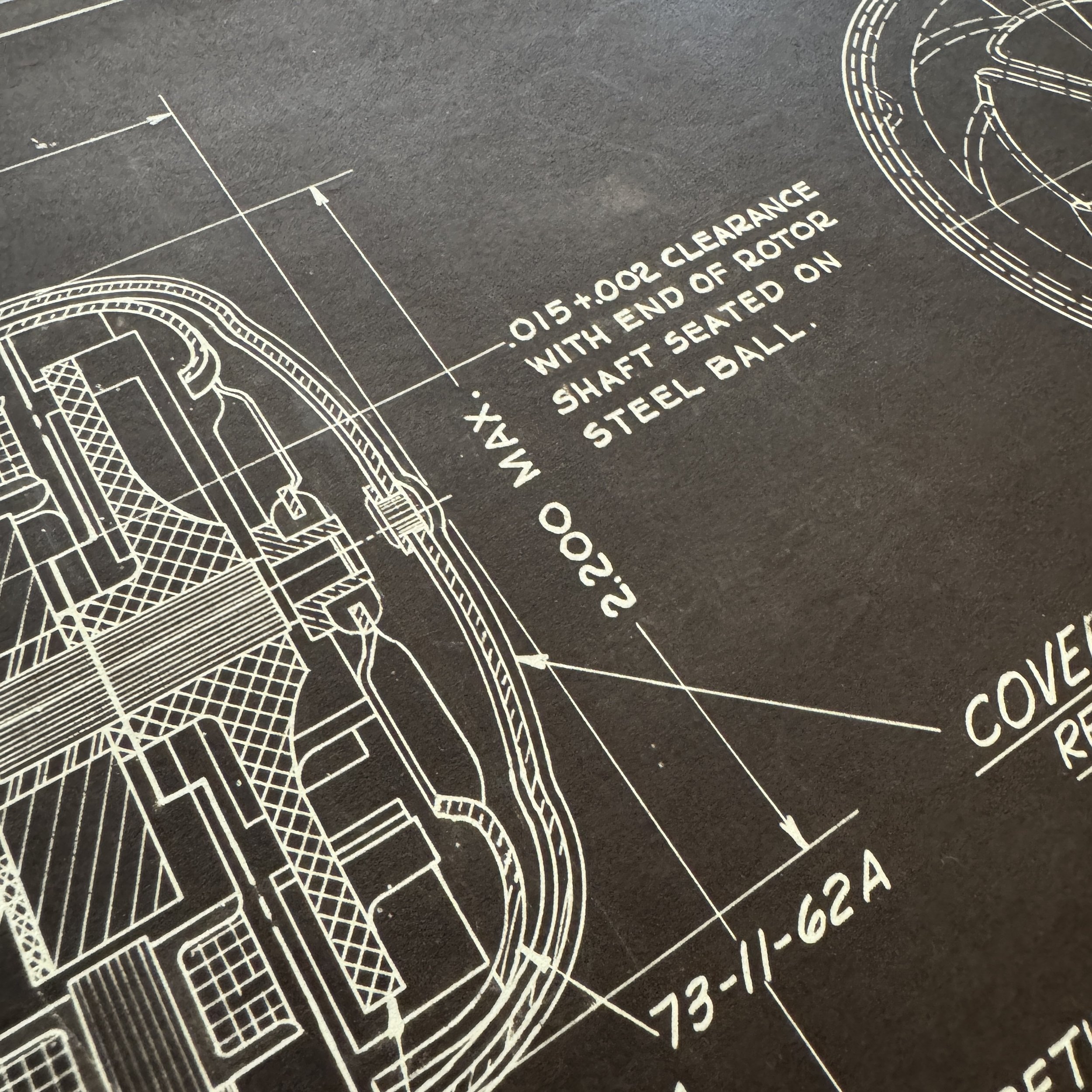
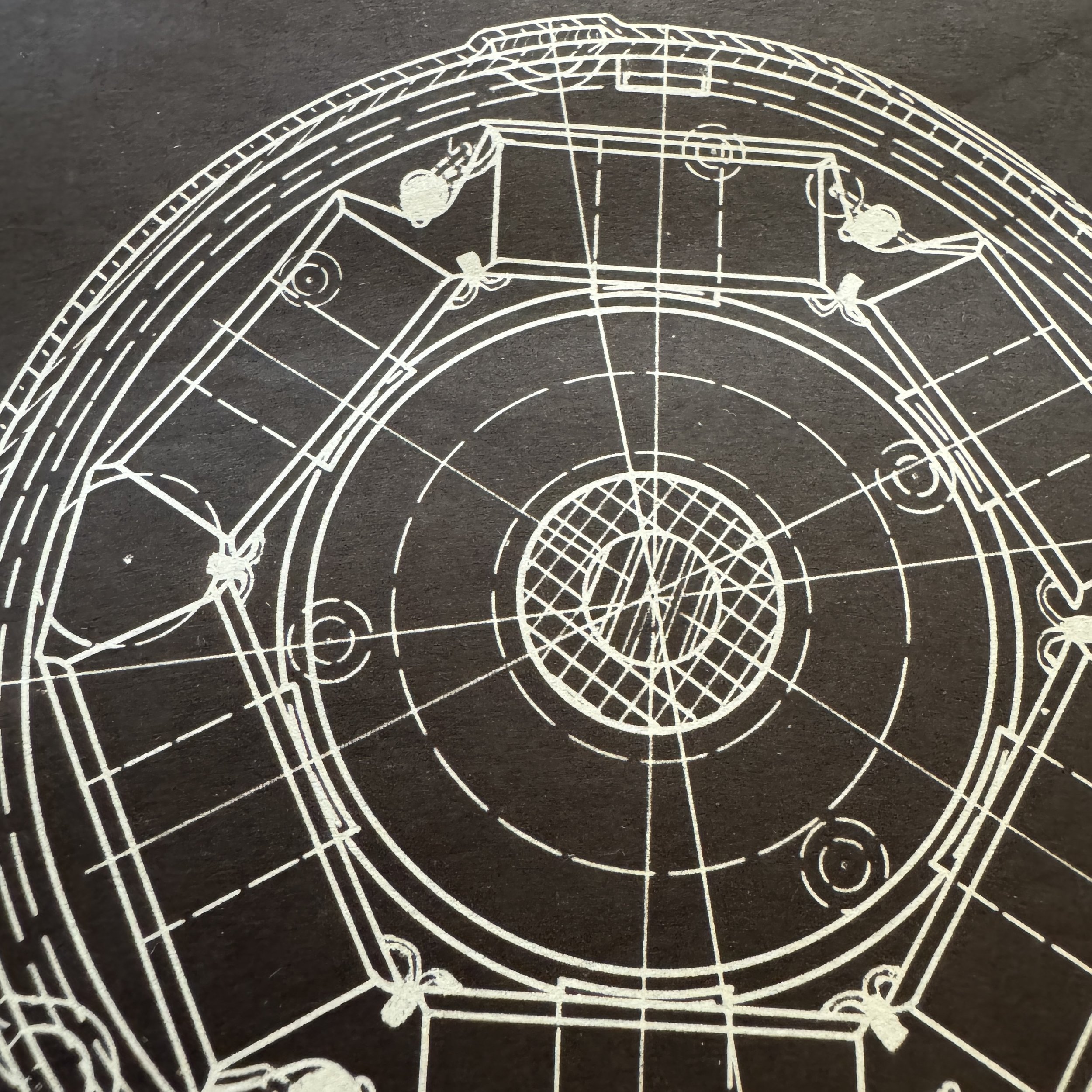
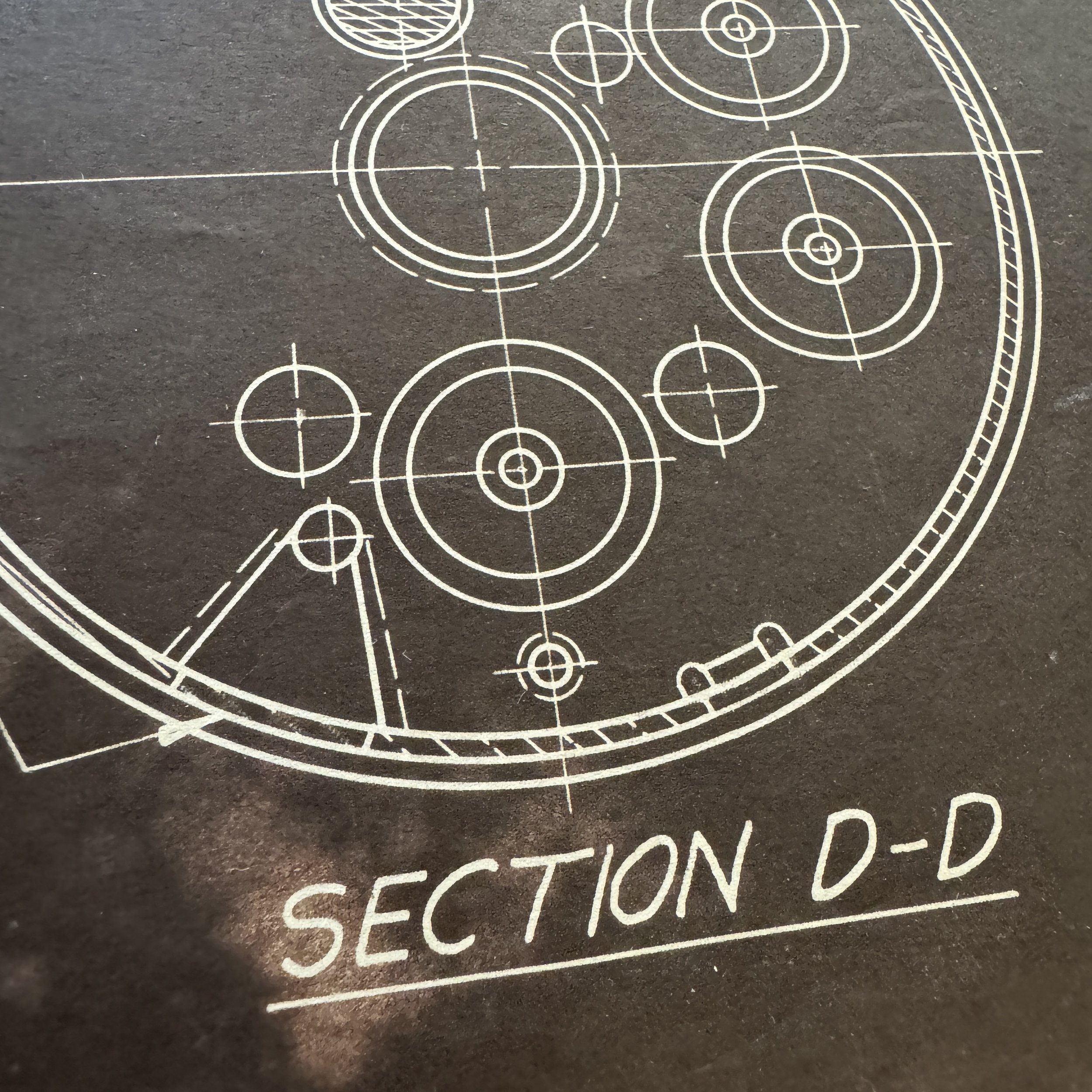
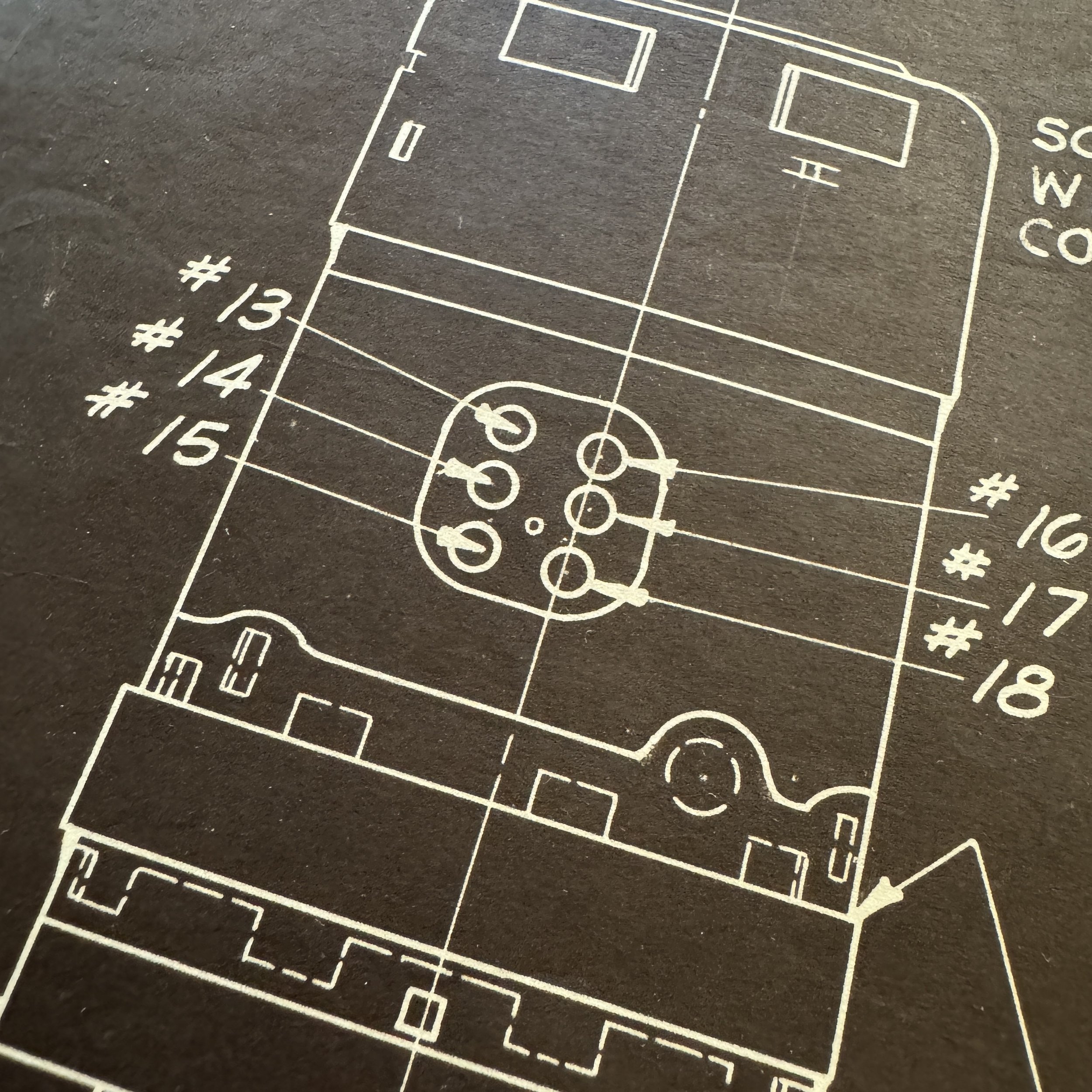
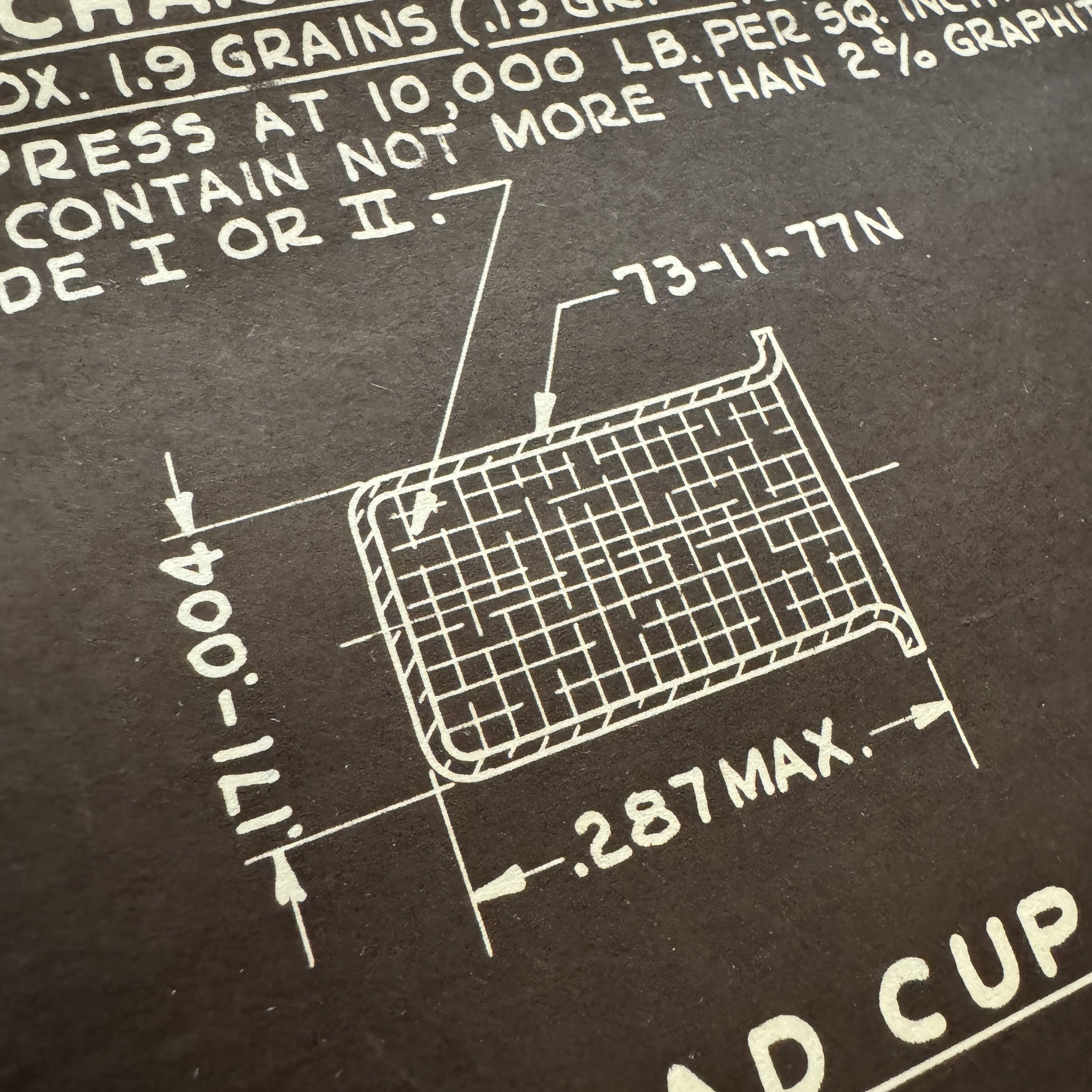
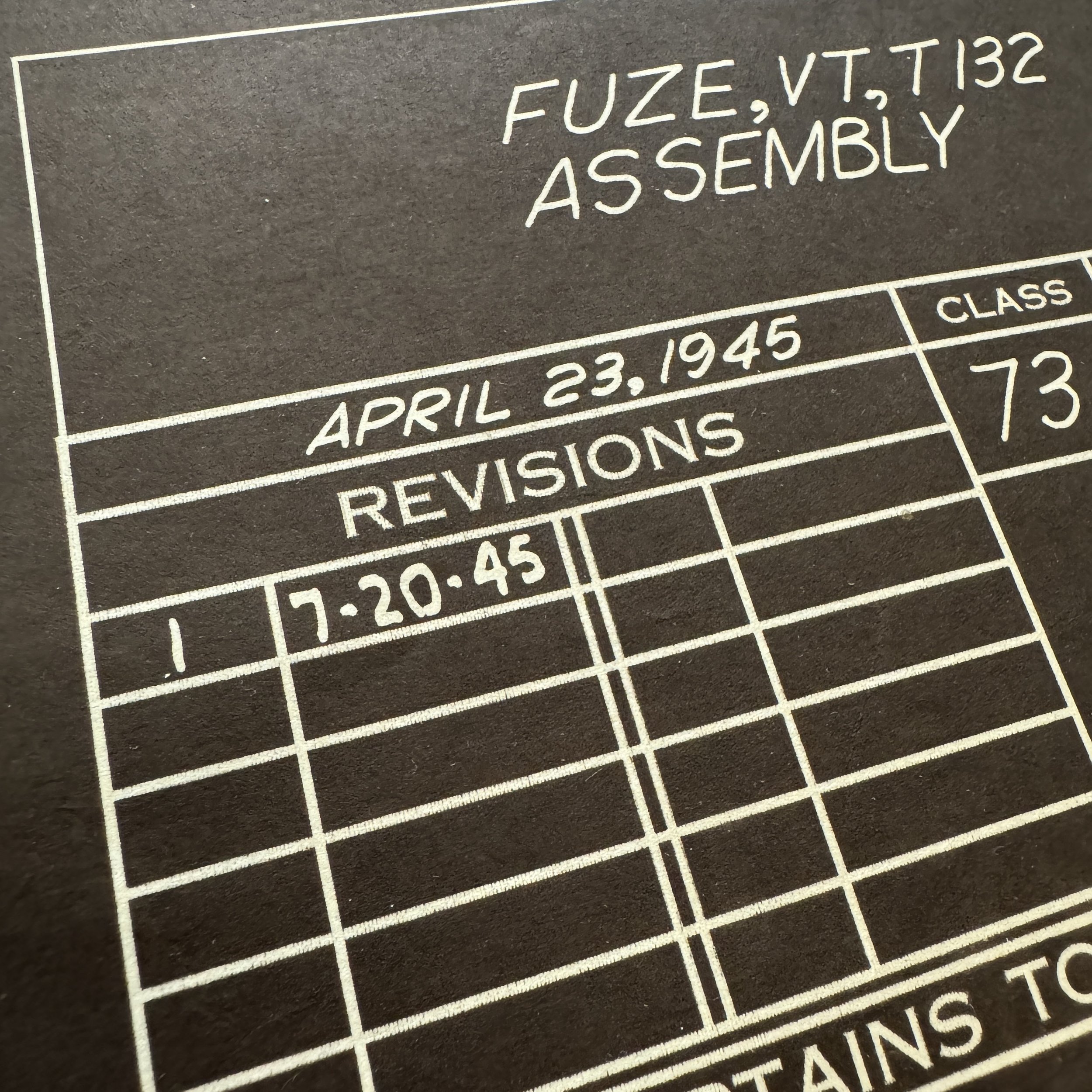
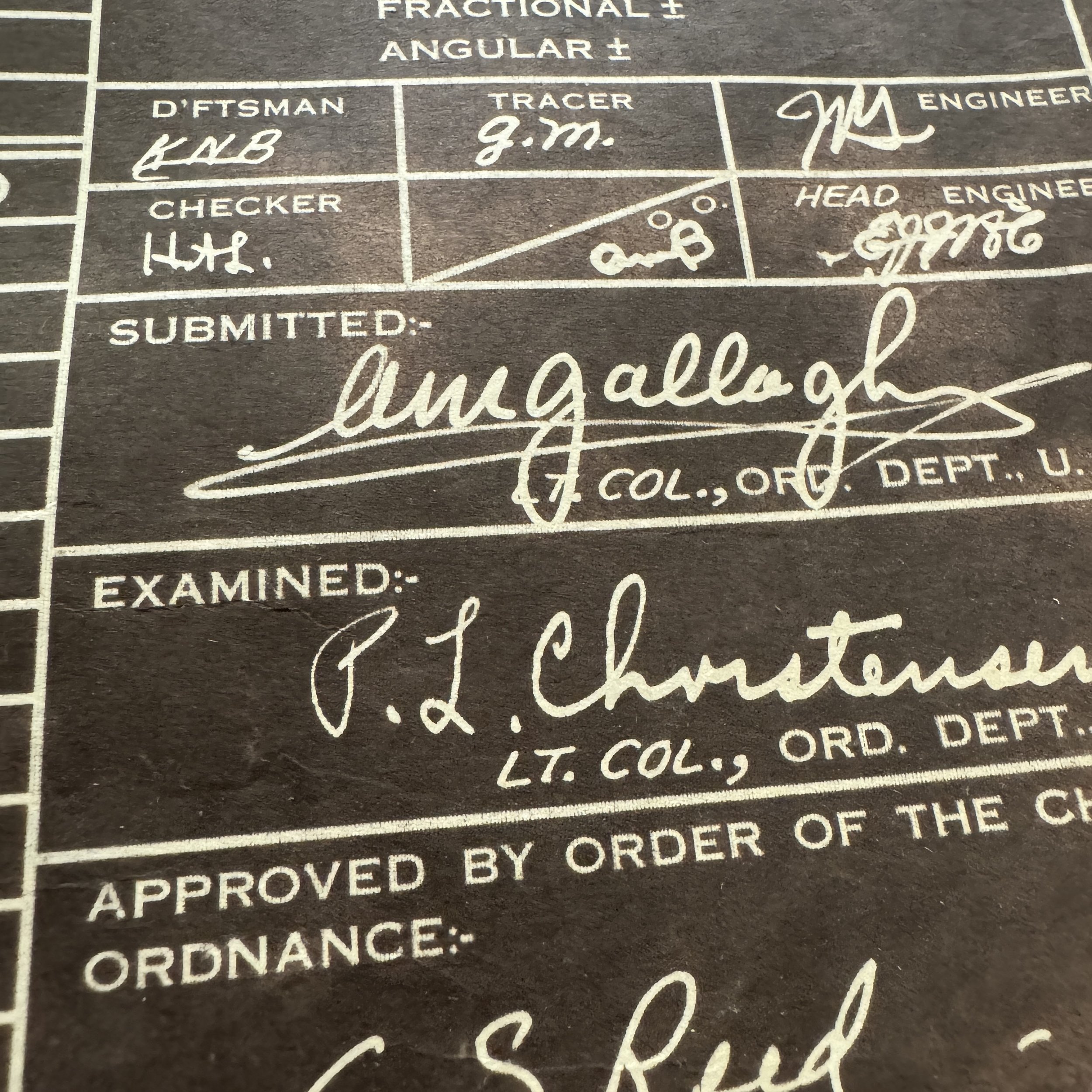
EXTREMELY RARE! WWII 1945 "SECRET" Variable Time (Proximity) Fuze T132 Model “Ordinance Department U.S.A.” Anti-Aircraft & Artillery Blueprint
Comes with a hand-signed C.O.A.
*This is a once-in-a-lifetime chance to own a truly one-of-a-kind artifact from one of the secret U.S. military innovations during WWII. This is the only known blueprint that is for sale in the public sector. Only a very small handful of these blueprints exist with all being in private museum collections.
Size: 23.5 × 40 inches
This extremely rare and museum-grade World War II artifact is an original “SECRET” marked 1945 dated “Ordinance Department U.S.A.” blueprint of the infamous and highly secretive Variable Time (VT) Fuze (T132 Model). Called “THE ALLIES BILLION DOLLAR SECRET”, the Variable Time (VT) Fuze, often called Proximity Fuze, was considered one of the most highly classified and significant technological advances by the U.S. military during WWII. This original Ordinance Department blueprint was created on April 23rd, 1945 and was created with updated improvements to the Variable Time (VT) Fuze from the previous Ordinance Dept. revision done on July 20th, 1945.
The VT fuze contained a small radar transmitter and receiver that would emit radio waves. When the shell approached a target, the reflected radio waves would trigger the detonation of the shell at an optimal distance, greatly improving accuracy compared to contact or timed fuzes. The VT fuze revolutionized anti-aircraft warfare and played a crucial role in both the European and Pacific theaters. It increased the effectiveness of anti-aircraft artillery by allowing shells to detonate in proximity to aircraft, rather than needing a direct hit. It also had applications in ground combat, improving the effectiveness of artillery against troops and vehicles by causing air bursts over enemy positions.
The secrecy surrounding the VT fuze was critical due to its potential to drastically alter the course of the war, particularly in anti-aircraft and artillery operations. Because of this new innovation, the VT Fuze was kept secret, even from many of the United States' closest allies during the war.
Strict Secrecy and Limited Sharing:
The U.S. military was acutely aware that if the Axis powers, particularly Germany or Japan, got hold of the VT fuze technology, they could reverse-engineer it or develop countermeasures, negating the fuze’s tactical advantages. This concern led to extreme precautions in guarding its secrecy.
Limited Distribution to Allies:Although the U.S. shared a great deal of military technology with its Allies, including the British, the VT fuze was initially withheld from broad dissemination. Even Britain, the closest ally of the U.S., did not receive the fuze for general use until its effectiveness had been thoroughly demonstrated and controlled deployment could be ensured.
The British were eventually given access to VT fuzes for anti-aircraft use but were required to follow strict protocols to prevent any capture of these devices by the enemy. In fact, early versions of the VT fuze were used by British forces during theBattle of the Bulge, but under orders that they only be fired over Allied-controlled territory to prevent any possibility of Axis forces retrieving unexploded shells with the fuzes intact.
Not Shared with the Soviet Union:The U.S. and the Soviet Union were technically Allies during the war, but the level of distrust between the two nations prevented the sharing of many advanced technologies, including the VT fuze. The U.S. feared that sharing the technology with the Soviets could lead to it falling into the hands of the Germans (as the Eastern Front was fluid and constantly shifting) or that the Soviets might use it post-war in ways that conflicted with U.S. interests.
Controlled Deployment and Usage
Battlefield Restrictions:To maintain secrecy, American troops were instructed to only use the VT fuze under specific conditions that minimized the risk of recovery by enemy forces. For instance, during theBattle of the Bulge, U.S. artillery units used the VT fuze in critical moments against advancing German forces, but only when it was certain that any shells that misfired would land in territory firmly under Allied control. The fuzes were also often programmed to self-destruct if they failed to detonate near the target, further reducing the risk of capture.
Impact of Secrecy:The VT fuze's secrecy and controlled deployment allowed the Allies to maintain a significant tactical advantage. German and Japanese forces were left perplexed as to why U.S. anti-aircraft artillery became suddenly more effective, bringing down more planes with seemingly fewer direct hits. The Germans, in particular, were unable to counter the technology effectively during the war.
Aftermath and Legacy
The VT fuze remained a closely guarded secret until the final stages of the war, when it became apparent that the Allies were on the verge of victory. Even after its widespread use in the war’s final months, the U.S. military still treated the technology as sensitive and continued to limit information about it. The success of the VT fuze was so significant that it was considered one of the decisive technologies that helped secure Allied air superiority and ground victories in key battles.
In summary, the VT fuze, including the T132 model, was a revolutionary piece of military technology that remained under tight wraps throughout most of World War II. The U.S. military's intense focus on keeping it secret reflected its understanding of just how much of a game-changer this fuze was and how crucial it was to prevent it from falling into enemy hands. This strategy paid off, as the VT fuze played a pivotal role in the defeat of the Axis powers without ever being compromised.